Mexico City, the bustling capital city of Mexico, is home to a diverse range of bird species that make the urban landscape their habitat.
The city’s parks and public spaces are a popular destination for birdwatchers, who come from far and wide to catch a glimpse of some of the winged residents of the city.
From the elegant White-winged Dove to the colorful Vermilion Flycatcher, there is no shortage of avian activity in the city.
In this article, we will explore some of the most common birds found in Mexico City and their unique characteristics, providing a comprehensive list of the birds that can be seen in this vibrant metropolis.
1. Rock Dove
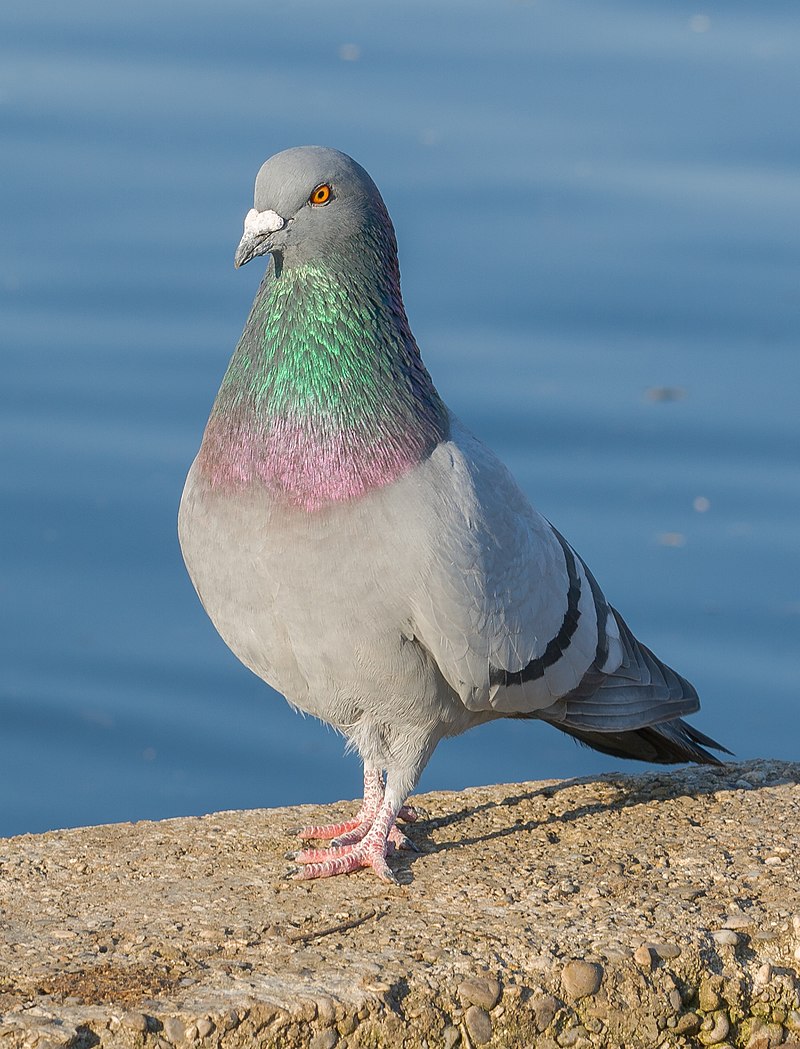
Rock dove, also known as Rock Pigeon or Common Pigeon, is a member of the bird family Columbidae.
It is considered to be an important creature worldwide due to its domestication by humans centuries ago; resulting in the modern-day Domestic pigeon which descends from this species.
Its population has increased over time because some domestic pigeons have escaped captivity and joined wild populations.
The rock dove can most easily be identified by its prominent blue-grey feathers with darker bars on wings and tail along with two black bands on each wing.
They are typically found in large flocks near cliffs or buildings but may also inhabit rural habitats such as open fields and meadows if there’s enough food available for them nearby.
Although they don’t migrate far distances like other birds, their numbers increase significantly during winter months.
When more food sources become available closeby so that they won’t need to travel too far away from home base for nourishment.
Scientific classification:
| Kingdom | Animalia |
| Phylum | Chordata |
| Class | Aves |
| Order | Columbiformes |
| Family | Columbidae |
| Genus | Columba |
| Species | C. livia |
Also Featured In: Common Birds in India, Italian Birds You Should Know
2. American Robin

The American robin is a migratory bird, belonging to the true thrush genus and Turdidae family.
It was named after its European counterpart due to the similar reddish-orange breast they both possess; however, they are not related closely.
This species can be seen through most of North America during winter months, as well as in parts of Mexico and Central America where it also breeds.
They have plump bodies with gray upperparts and white underparts that vary from yellow on their throats down to orange toward their bellies.
Robins feed on fruits such as berries or insects like worms which makes them an important part of ecosystems by helping disperse seeds naturally throughout these areas.
Scientific classification:
| Kingdom | Animalia |
| Phylum | Chordata |
| Class | Aves |
| Order | Passeriformes |
| Family | Turdidae |
| Genus | Turdus |
| Species | T. migratorius |
Also Featured In: Most Common United States Birds, Most Common Winter Birds
3. House Sparrow
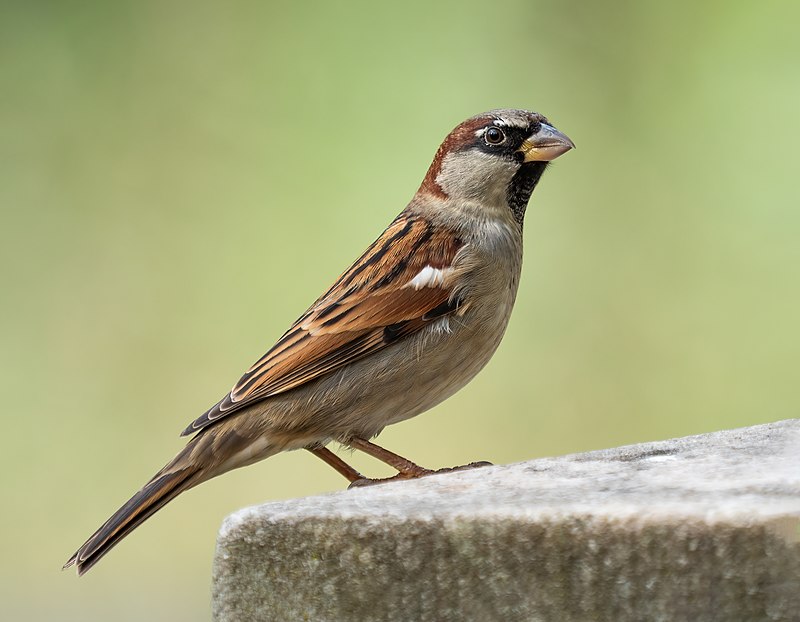
The house sparrow is a small bird of the Passeridae family. It has an average length of 16 cm and weighs 24-39.5 gm.
Females have dull brown and grey plumage, whereas males are brighter, with black, white and brown markings on their wings and back feathers.
This species is one among 25 different kinds in its genus Passer .These birds are found all around the world mainly near human dwellings where they feed off food scraps from garbage bins or gardens etc..
They also make nests close to houses which makes them even more visible to people living nearby.
House sparrows can be seen hopping around yards looking for food during daytime hours but usually hide in colonies at night time.
Scientific classification:
| Kingdom | Animalia |
| Phylum | Chordata |
| Class | Aves |
| Order | Passeriformes |
| Family | Passeridae |
| Genus | Passer |
| Species | P. domesticus |
Also Featured In: Birds for Your Home Garden, Ukrainian Birds You Should Know
4. House Finch

The House Finch is a species of finch native to western North America and has been introduced in the eastern half of the continent as well as Hawaii.
It’s an average-sized finch with adults measuring 12.5 – 15 cm (5 – 6 inches) long and having wingspans between 20 – 25 cm (8 – 10 inches).
The upperparts are brown, while its underparts range from pale grayish white to yellow depending on subspecies.
Its face is streaked or spotted with reddish coloration; males typically have brighter plumage than females due to sexual dimorphism.
They’re mostly found near human habitations such as farms and gardens where they feed on grains, fruits, insects etc., making them very popular among birders who want something colorful for their backyard.
Scientific classification:
| Kingdom | Animalia |
| Phylum | Chordata |
| Class | Aves |
| Order | Passeriformes |
| Family | Fringillidae |
| Subfamily | Carduelinae |
| Genus | Haemorhous |
| Species | H. mexicanus |
Also Featured In: Birds Commonly Found in New York, Birds Live in Arkansas
5. Mourning Dove
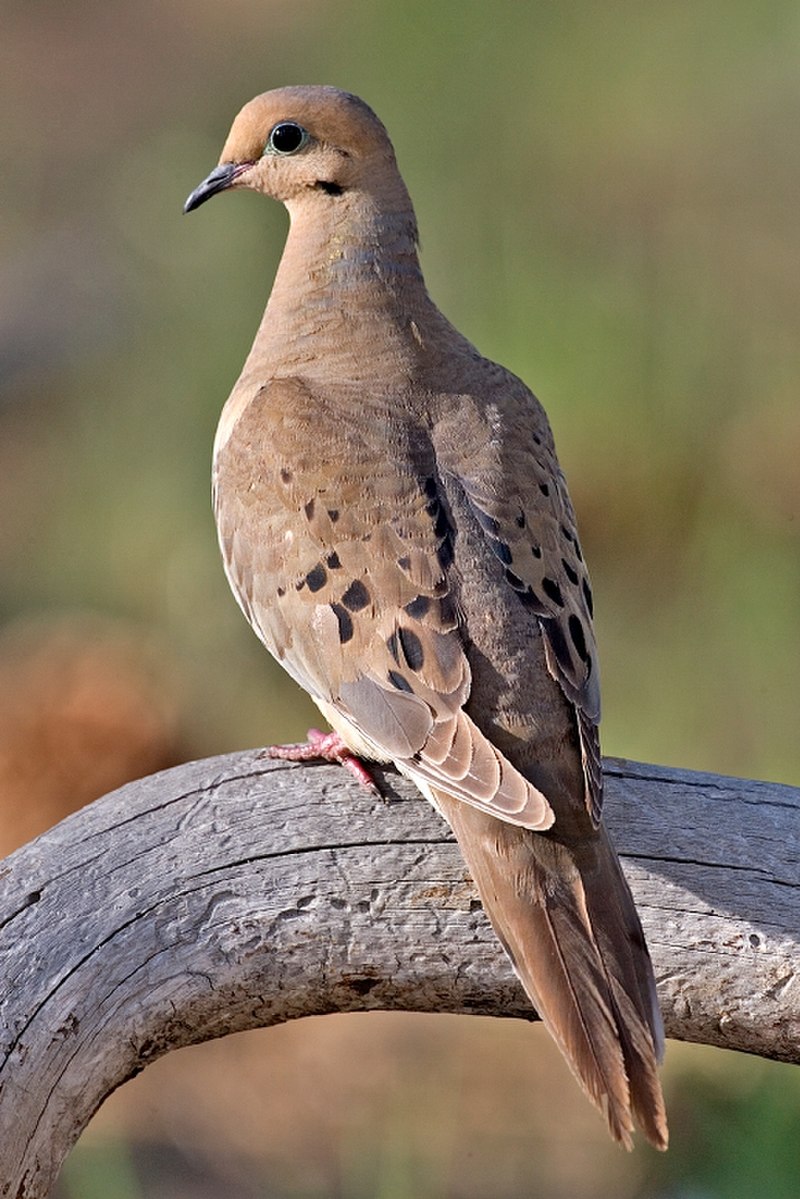
The Mourning Dove is a breathtakingly beautiful bird. It has stunning gray and brown feathers with white tipped wings, giving it an elegant appearance. Its long tail also adds to its graceful look in flight.
A symbol of peace and serenity, they are abundant across North America and can be found in gardens or open fields throughout the year.
As well as being popular game birds for hunters, they feed on grains such as wheat and millet providing important food sources for wildlife species including foxes, coyotes, skunks and raccoons.
These doves have a distinctive cooing sound that can often be heard echoing through woodlands during summer evenings making them one of nature’s greatest treasures.
Scientific classification:
| Kingdom | Animalia |
| Phylum | Chordata |
| Class | Aves |
| Order | Columbiformes |
| Family | Columbidae |
| Genus | Zenaida |
| Species | Z. macroura |
Also Featured In: New Hampshire Birds You Should Know, Common Southern Californian Birds
6. Acorn Woodpecker
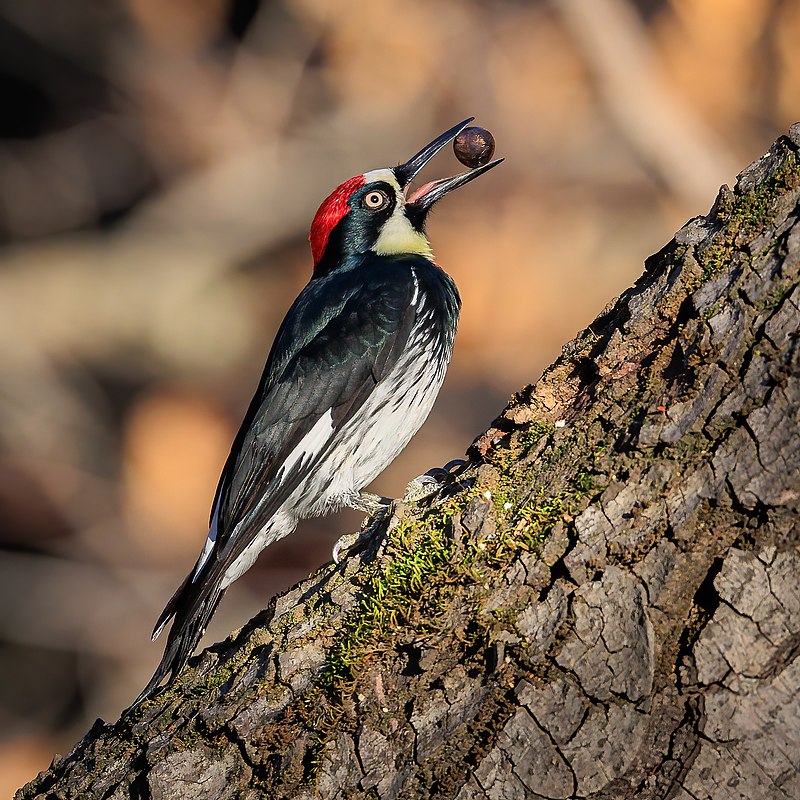
The Acorn woodpecker is a medium-sized bird with an average weight of 85 grams and 8.3 inches in length. It was first described by the English naturalist William John Swainson from a specimen collected in Mexico, back in 1827.
Its scientific name, Melanerpes formicivorus, combines Latin words meaning “ant” and “-vorous”.
This species has distinct black plumage all over its body except for some white patches on their wings and tail feathers which can be seen when flying or perched atop trees.
They are known to store acorns inside tree crevices as well as within bark cracks – often using them during lean times.
The acorn woodpecker is also socially active; they live together with other birds of their kind in groups called ‘granaries’. Their chirps are loud enough that they can easily be heard from afar.
Scientific classification:
| Kingdom | Animalia |
| Phylum | Chordata |
| Class | Aves |
| Order | Piciformes |
| Family | Picidae |
| Genus | Melanerpes |
| Species | M. formicivorus |
Also Featured In: Birds that Live in the Grand Canyon National Park, Birds that Live in Yosemite National Park
7. American Avocet
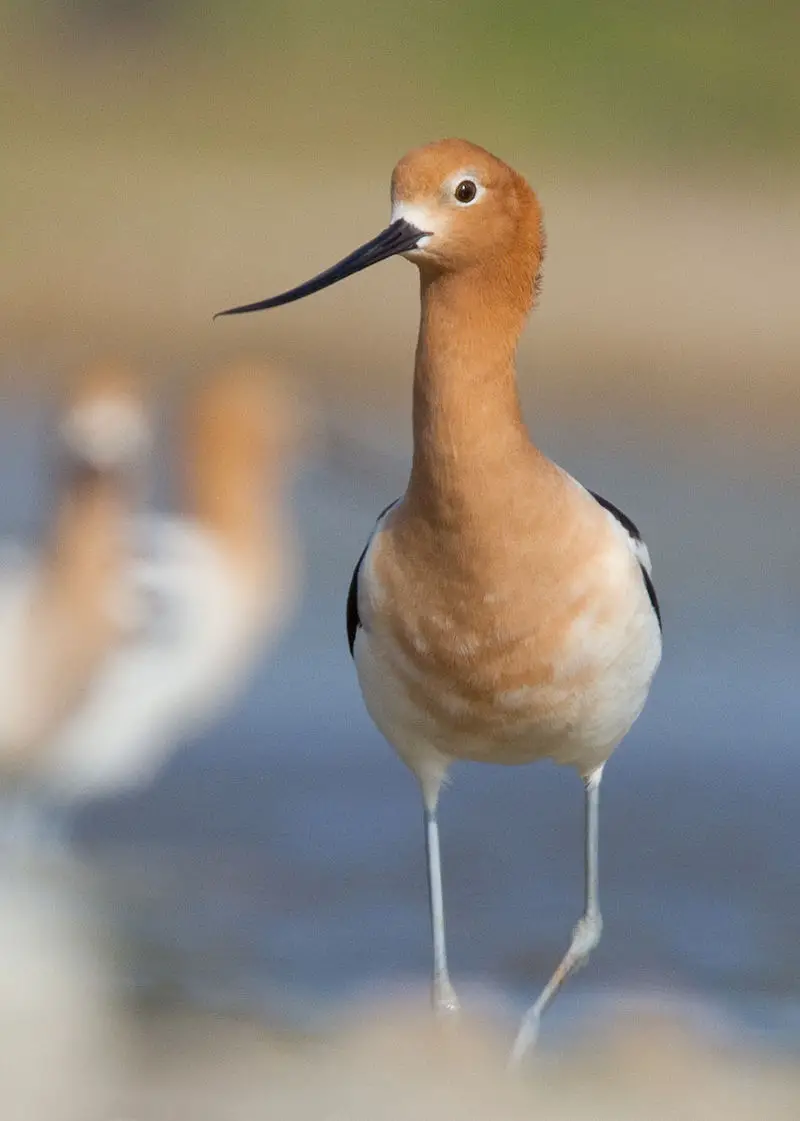
The American avocet is a stunningly beautiful bird found in North America. With its striking black and white plumage, long blue legs, and upturned bill it is an unmistakable sight.
It spends much of its time foraging around shallow water or mud flats searching for crustaceans and insects to feed on by sweeping its beak from side-to-side through the water.
The German naturalist Johann Friedr formally described this species back in 1789 as Recurvirostra americana – aptly named due to their habit of recurving their bills when feeding.
These graceful wading birds are truly a marvel of nature that deserve our admiration.
Scientific classification:
| Kingdom | Animalia |
| Phylum | Chordata |
| Class | Aves |
| Order | Charadriiformes |
| Family | Recurvirostridae |
| Genus | Recurvirostra |
| Species | R. americana |
Also Featured In: Most Popular Bird Species in North America, Birds that Live around Central Florida
8. American Coot
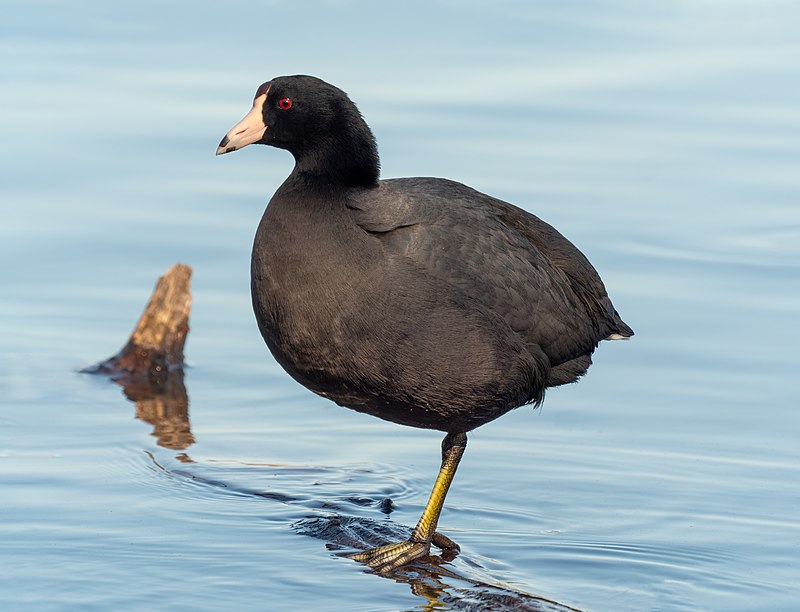
The American coot is a bird of the Rallidae family, commonly mistaken for ducks. However, they are only distantly related and have broad lobed scales on their lower legs and toes that fold back with each step to help them walk on dry land unlike ducks which have webbed feet.
Coots are omnivores who typically live in freshwater marshes, ponds and lakes but can also be found in brackish water habitats or even open oceans during migration season.
They feed mainly on algae and aquatic plants as well as small fish, snails, insects larvae and worms from time to time.
The males display territorial behaviour by chasing away intruders within their territory while females lay eggs mostly.
In floating nests made of vegetation near shorelines or islands among reeds where chicks hatch after about three weeks incubation period before swimming off into adulthood shortly afterwards at 10-12 weeks old.
Scientific classification:
| Kingdom | Animalia |
| Phylum | Chordata |
| Class | Aves |
| Order | Gruiformes |
| Family | Rallidae |
| Genus | Fulica |
| Species | F. americana |
Also Featured In: Phoenix Birds You Should Know, Water Birds Live around Us
9. Barn Swallow
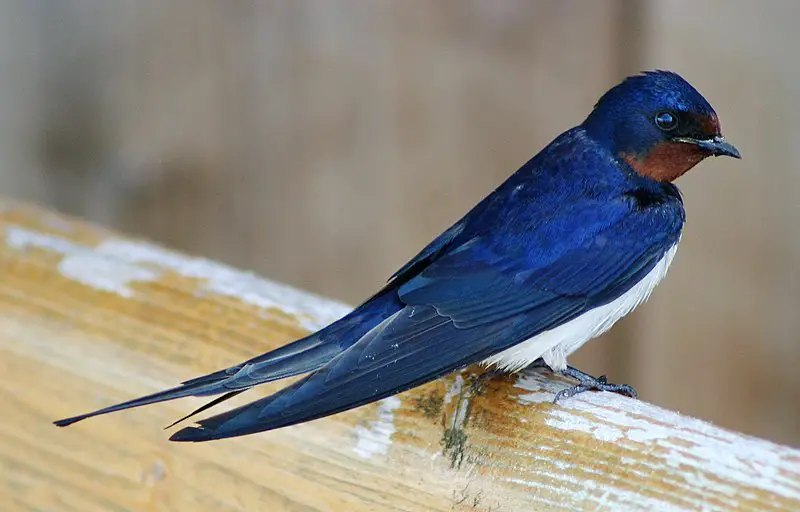
The Barn Swallow is a beautiful passerine bird with blue upperparts and a long, deeply forked tail. Found in Europe, Asia, Africa and the Americas.
It has an astonishingly large natural distribution spanning 251 million square kilometres globally; likely making it one of the world’s most widespread species.
This swallow typically nests near human habitation as well as other open areas such as fields or grasslands which provide them with suitable invertebrate prey to feed on.
They are insectivorous birds that often fly together in flocks looking for food over rivers or marshes usually just above tree-top level.
The barn swallow can also be identified by its strong flight consisting of swift continuous wing beats interspersed with glides during which they hold their wings slightly raised at the shoulders giving them distinct V shaped silhouettes in the sky.
Scientific classification:
| Kingdom | Animalia |
| Phylum | Chordata |
| Class | Aves |
| Order | Passeriformes |
| Family | Hirundinidae |
| Genus | Hirundo |
| Species | H. rustica |
Also Featured In: Birds that Live in Croatia, Common Estonian Birds
10. Great-Tailed Grackle
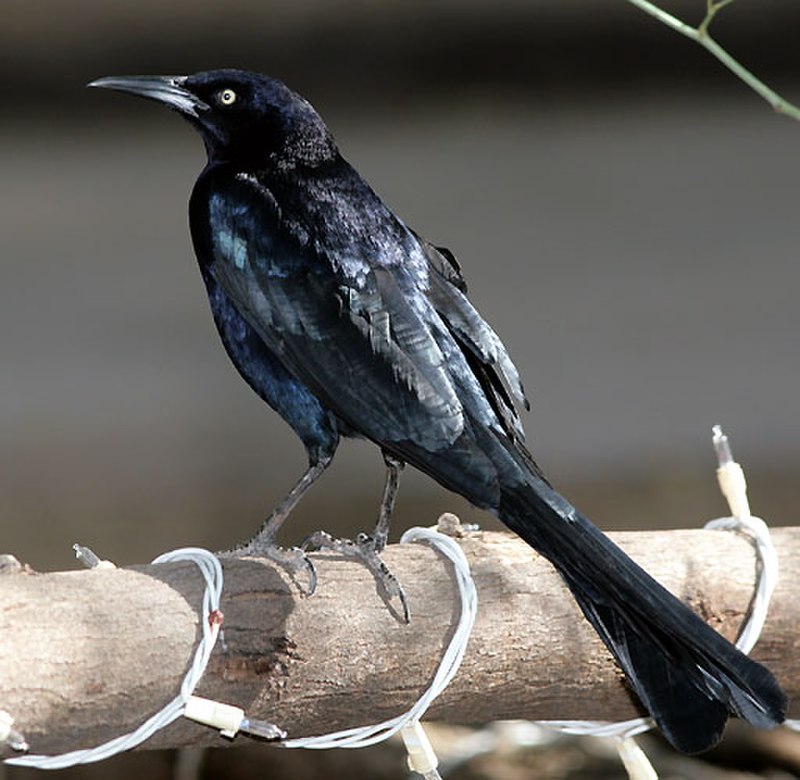
The Great-tailed Grackle is a medium sized bird native to North and South America. It belongs to the family Icteridae, making it closely related to two other species of grackles – the Boat-tailed and Slender-billed.
They are highly social birds which often appear in large flocks or colonies.
Their plumage ranges from glossy black with blue or purple iridescence, through brownish grey shades depending on location.
In some areas they have been known as “blackbirds” due their predominately dark colouring.
This adaptable species is also renowned for its distinctive long tail feathers – hence its name.
Scientific classification:
| Kingdom | Animalia |
| Phylum | Chordata |
| Class | Aves |
| Order | Passeriformes |
| Family | Icteridae |
| Genus | Quiscalus |
| Species | Q. mexicanus |
Also Featured In: Top Birds Found in Mexico, Common Birds That Live in Las Vegas
11. White-Winged Dove
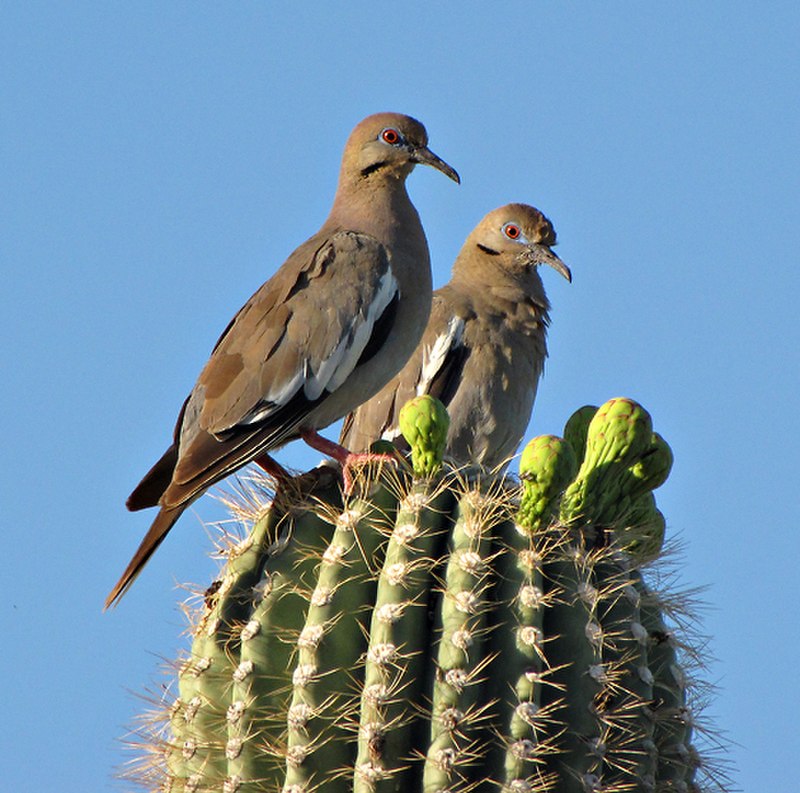
The White-winged Dove is an impressive bird with a large body and wingspan. Its distinctive feature is the white edge on its wings, which makes it easily recognizable when in flight.
It has blue eyerings, red eyes and gray plumage, while juveniles are duller in coloration than adults.
This dove species inhabits areas from Southwestern United States through Mexico to Central America as well as Caribbean islands.
They usually live close to human settlements or cities but can also be found in agricultural fields feeding on grains like corn or wheat seeds left by farmers after harvest season ends.
In their natural habitat they feed primarily on insects, fruits and small plants such as certain cacti species.
Scientific classification:
| Kingdom | Animalia |
| Phylum | Chordata |
| Class | Aves |
| Order | Columbiformes |
| Family | Columbidae |
| Genus | Zenaida |
| Species | Z. asiatica |
Also Featured In: Birds You’ll Find in South Texas , Common Birds of Houston
12. Inca Dove
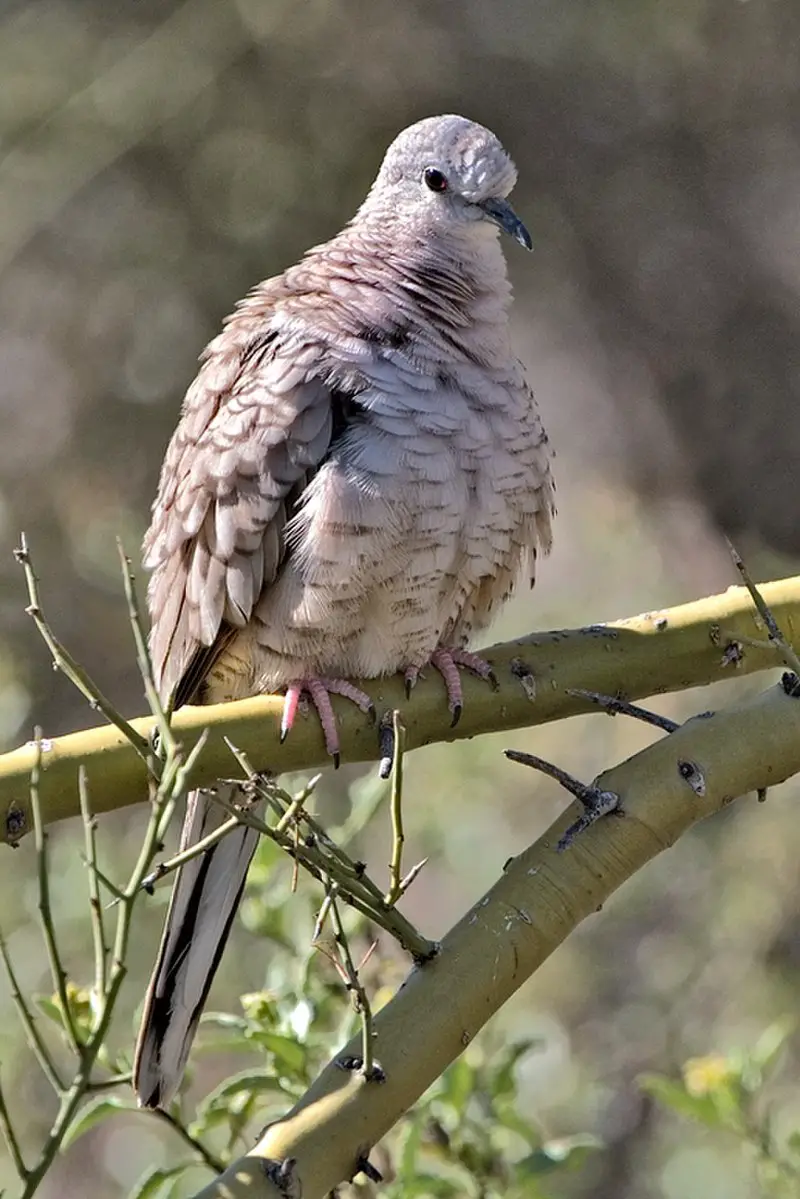
The Inca Dove is a small, slender bird found in the New World. It has an average length of 16.5–23 cm and weighs about 30-58 gm. Its wingspan measures around 28.5cm but can reach up to 32cm at max.
The body of this dove is grayish brown with feathers that are rounded off tips giving it a soft look overall.
This species was first described by French surgeon and naturalist René Lesson back in 1847 and since then have been living happily all over North America from Mexico through Texas to South Dakota, Kansas as well as parts of Arizona among others regions too.
Scientific classification:
| Kingdom | Animalia |
| Phylum | Chordata |
| Class | Aves |
| Order | Columbiformes |
| Family | Columbidae |
| Genus | Columbina |
| Species | C. inca |
Also Featured In: Most Common Birds of Nuevo Leon, Birds that You’ll Find in Chiapas
13. Rufous-Backed Robin
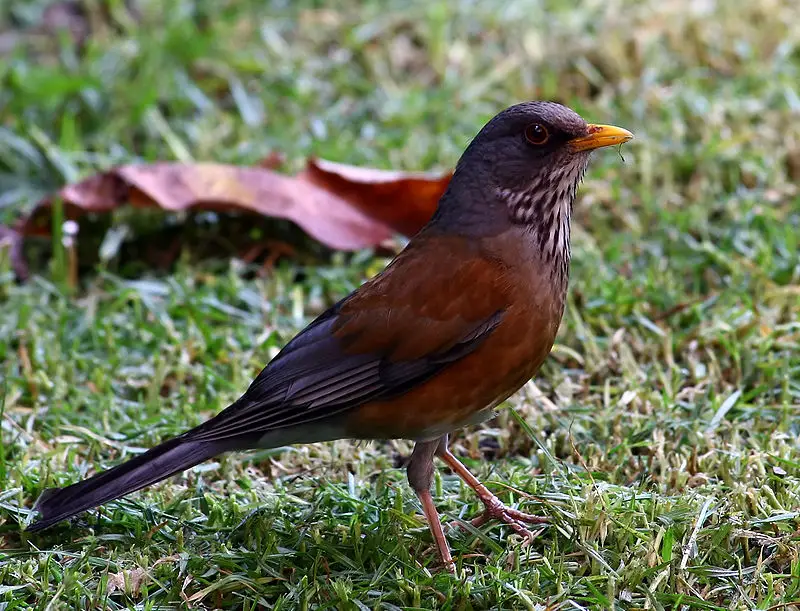
The Rufous-backed Robin, also known as the Rufous-backed Thrush, is a stocky songbird native to the Pacific slopes of Mexico.
With an average length of 21.5–24 cm (8.5–9.4 in) and weight 74 g (2.6 oz), it has similarities with its widespread relative – American robin – but is slightly smaller in size, having an average wingspan measuring 39.4 cm (15.5 in).
It possesses striking features such as yellow eyes bordered by black eye rings; white throat surrounded by a grey neck patch; buffish upperparts that are crossed with darker streaks or spots on both sides; and lastly rusty red tail feathers which gives this species its name.
Scientific classification:
| Kingdom | Animalia |
| Phylum | Chordata |
| Class | Aves |
| Order | Passeriformes |
| Family | Turdidae |
| Genus | Turdus |
| Species | T. rufopalliatus |
Also Featured In: Most Common Birds Found in Nayarit,
14. Bewick’s Wren
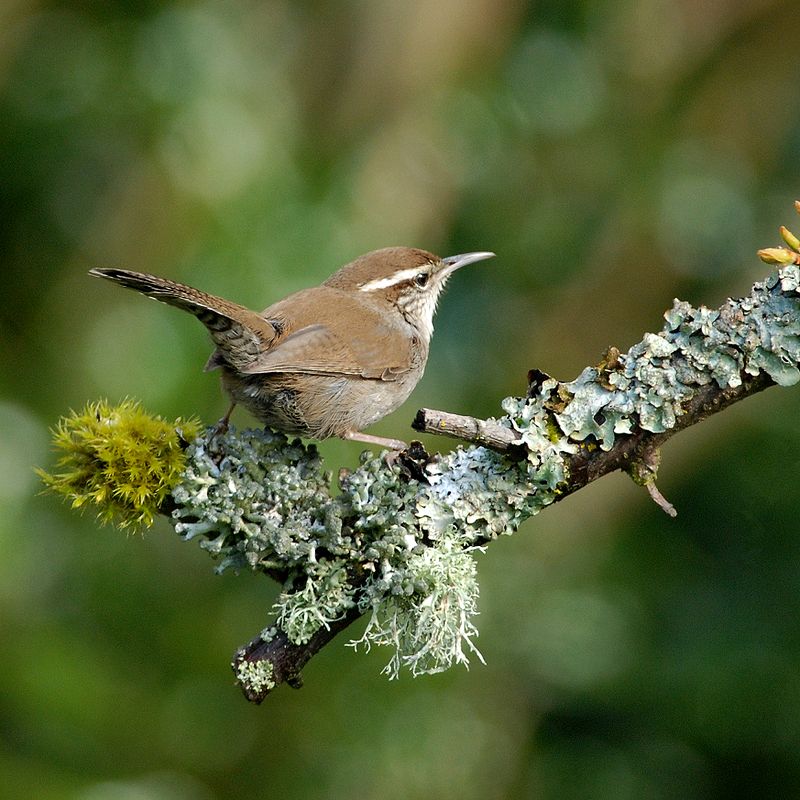
The Bewick’s wren (Thryomanes bewickii) is a small, grey-brown bird native to North America. Measuring at around 14 cm long it has distinctive white markings on its face and tail giving it an attractive appearance.
It can often be found in thickets or scrubby areas as well as urban gardens and parks.
Its song is loud and melodious which makes them popular amongst ornithologists; they are known for their complex vocalisations composed of whistles, clicks, churrs and trills.
The Bewick’s Wren mainly feeds on insects but will also eat fruits if available during the colder months when food may otherwise be scarce.
This species of wren plays an important role in controlling insect populations making them beneficial inhabitants of our environment.
Scientific classification:
| Kingdom | Animalia |
| Phylum | Chordata |
| Class | Aves |
| Order | Passeriformes |
| Family | Troglodytidae |
| Genus | Thryomanes P.L. Sclater, 1862 |
| Species | T. bewickii |
Also Featured In: Birds That Live around Seattle, Birds in Pacific Northwest
15. Long-Tailed Wood Partridge
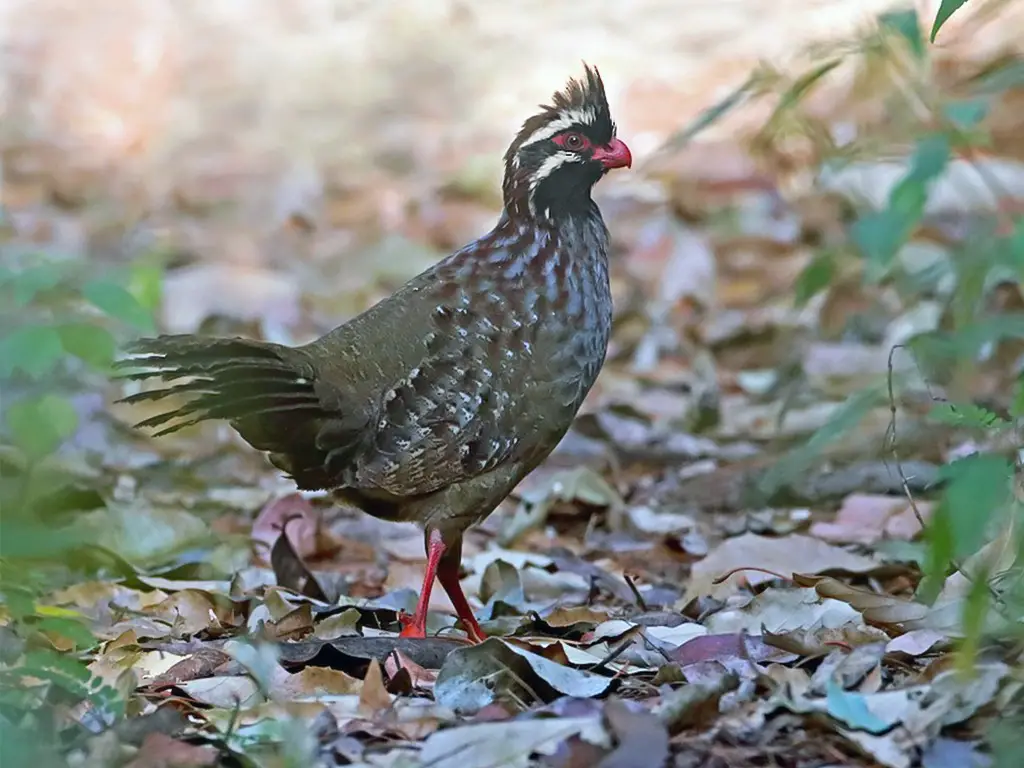
The Long-tailed Wood Partridge is a species of bird found only in Mexico, belonging to the family Odontophoridae.
It has six subspecies and measures 11.4 – 16.6 inches (29 – 42 cm) long with its namesake long tail accounting for almost two thirds of that length.
Its plumage is mostly greyish brown but can range from purple through chestnut red to olive green depending on its location and time of year.
This partridge does not migrate nor live in flocks as other quail do, instead living alone or in pairs near forest edges where there are plenty of low bushes for cover against predators such as foxes and coyotes which it will hide from if disturbed by running into thick vegetation or flying short distances away from them when possible.
Scientific classification:
| Kingdom | Animalia |
| Phylum | Chordata |
| Class | Aves |
| Order | Galliformes |
| Family | Odontophoridae |
| Genus | Dendrortyx |
| Species | D. macroura |
Also Featured In: Most Common Oaxaca Birds,
16. Canyon Towhee
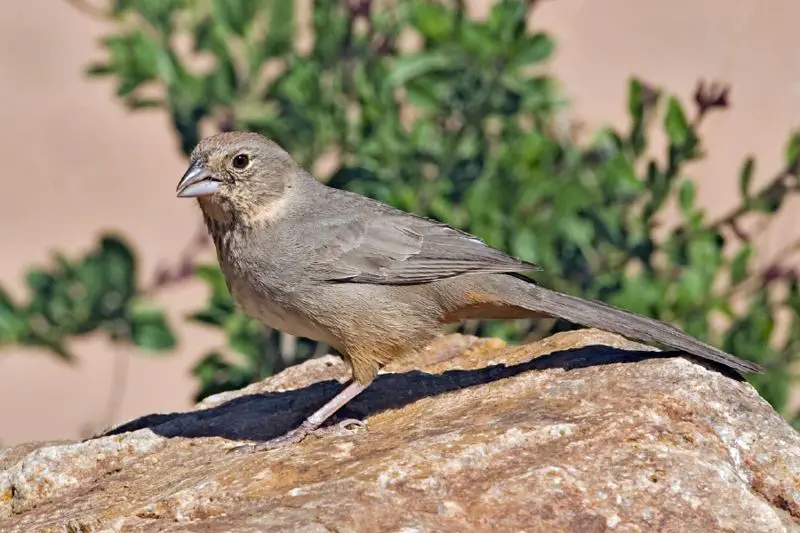
The Canyon Towhee is a small bird belonging to the Passerellidae family. It has an olive-brown head and back, with a greyish white belly and chest. The wings are darker than the body, while its tail feathers are brown in color.
This species resides near dry canyons, hence their name; however it inhabits other woodlands as well. Its diet consists of seeds, fruits, insects and some grasses too.
They generally forage or search for food on ground level but also occasionally pick up food from tree branches or shrubs as well.
During breeding season they engage in courtship displays by bowing low with spread tails that vibrate rapidly before taking flight into the air singing songs all along.
Scientific classification:
| Kingdom | Animalia |
| Phylum | Chordata |
| Class | Aves |
| Order | Passeriformes |
| Family | Passerellidae |
| Genus | Melozone |
| Species | M. fusca |
Also Featured In: Birds that Live in Arizona Desert, Brown Birds that Found in Texas
17. Broad-Billed Hummingbird
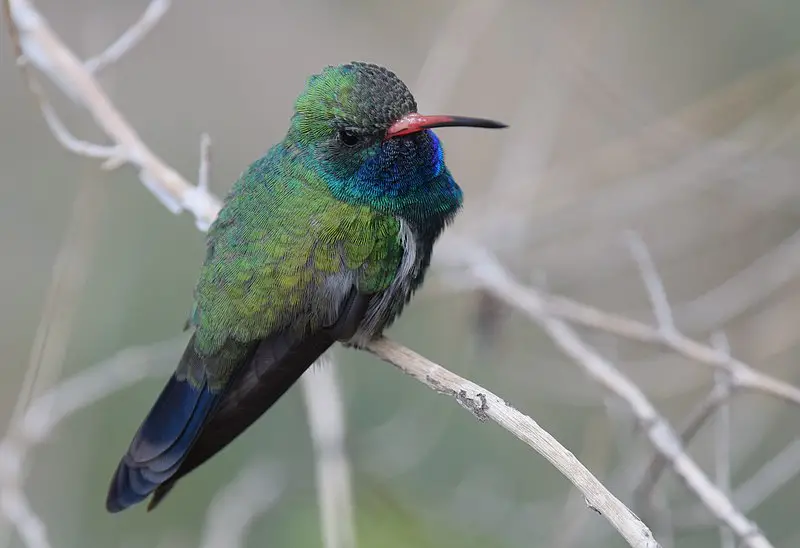
The Broad-billed Hummingbird is a small species of hummingbird that can be found in Mexico and the southwestern United States.
It has distinctive sexual dimorphism, with females resembling their juvenile counterparts more than males do.
This bird stands out thanks to its bright colors and broad, red bill. Other common names for this species include Colibri Mexicano (Spanish) or Mexican Hummingbird.
The Broad-billed usually nests on trees or shrubs near streams but may also occupy wooded areas or gardens close by human settlements during wintertime.
They feed mainly on nectar from flowers while supplementing their diet with insects depending on availability of prey items as well as seasonality changes throughout their range area.
Scientific classification:
| Kingdom | Animalia |
| Phylum | Chordata |
| Class | Aves |
| Order | Apodiformes |
| Family | Trochilidae |
| Genus | Cynanthus |
| Species | C. latirostris |
Also Featured In: Summer Birds that Live around Us, Birds You’ll Find in Sonoran
18. Green Heron
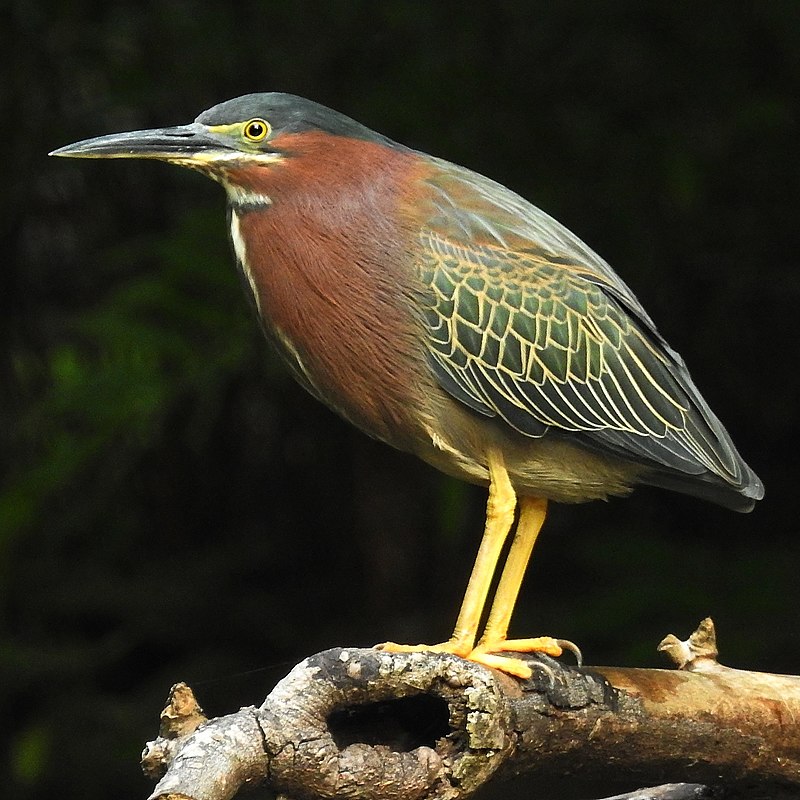
The Green Heron (Butorides virescens) is a small heron found throughout North and Central America.
It’s scientific name comes from Middle English ‘butor’ meaning bittern, combined with the Latin term for its distinctive greenish color – ‘virescens’.
For many years it was considered to be part of the same species as the Striated Heron (Butorides striata), commonly referred to as “green-backed herons”.
The nominate subspecies inhabits wetlands across much of this range, where they can be spotted stalking about in shallow water looking for fish or frogs on which to feed.
They are fascinating wading birds that have even been known to use tools such as sticks or baited lines when fishing.
Scientific classification:
| Kingdom | Animalia |
| Phylum | Chordata |
| Class | Aves |
| Order | Pelecaniformes |
| Family | Ardeidae |
| Genus | Butorides |
| Species | B. virescens |
Also Featured In: Birds that You’ll Find in Puerto Rico, Swamps Birds You Should Know
19. Russet Nightingale-Thrush
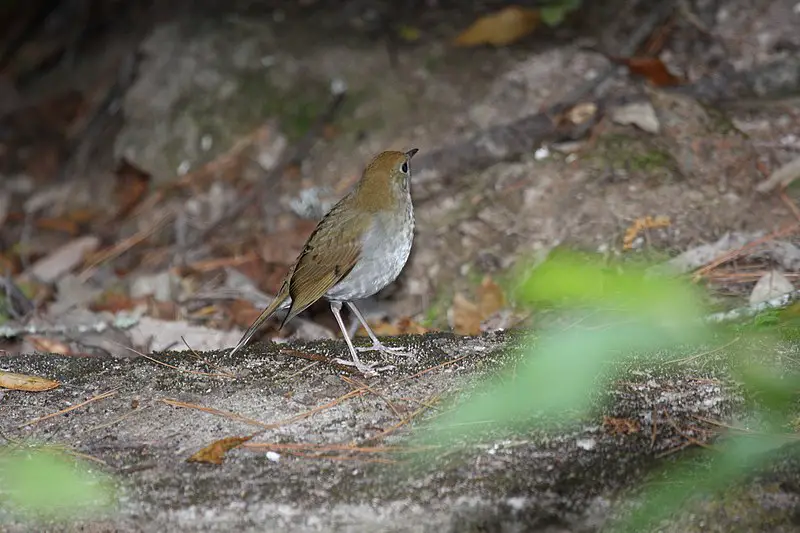
The Russet Nightingale-Thrush is a beautiful species of bird found exclusively in Mexico. It has a brown crown, back and wings with a pale gray face and throat.
Its belly is also pale gray but washed dusky for an extra touch of colour. The juveniles are even more mottled on their breasts and sides adding to its beauty.
This bird shares many similar traits as the Ruddy-Capped Nightingale Thrush making it easy to confuse them if you’re not paying attention.
Overall this stunning creature makes an amazing addition to any environment they inhabit.
Scientific classification:
| Kingdom | Animalia |
| Phylum | Chordata |
| Class | Aves |
| Order | Passeriformes |
| Family | Turdidae |
| Genus | Catharus |
| Species | C. occidentalis |
20. Green-Striped Brushfinch
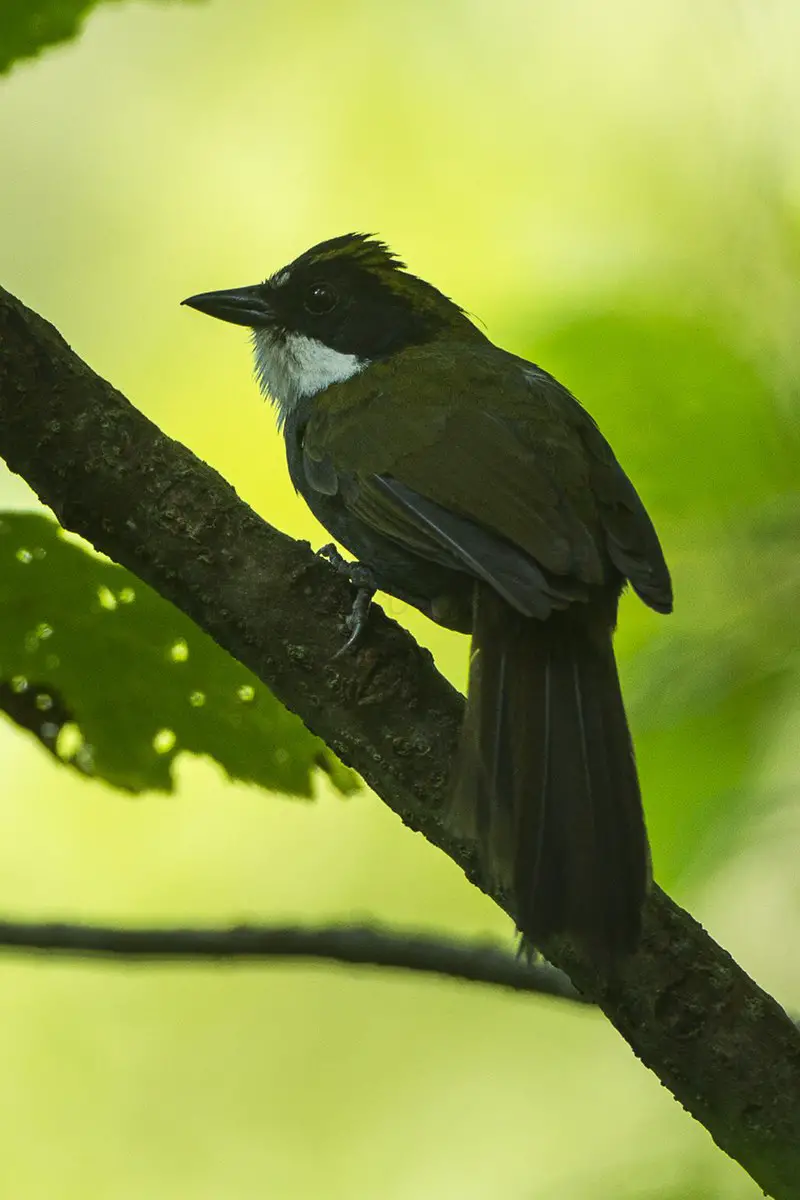
The Green-striped brushfinch is a species of bird found in Mexico, that belongs to the family Passerellidae.
This small finch has green stripes across its head and upper body, making it stand out from other birds in the area.
They tend to inhabit subtropical or tropical moist montane forests where they can find plenty of food sources such as insects and fruits.
These birds are sociable creatures who like living with their own kind, forming flocks that travel around together looking for food sources during the day before returning back home at nightfall.
The Green-striped brushfinch is an important part of any ecosystem since they help keep insect populations down by consuming them on regular basis while also dispersing seeds through droppings which helps increase plant diversity over time.
Scientific classification:
| Kingdom | Animalia |
| Phylum | Chordata |
| Class | Aves |
| Order | Passeriformes |
| Family | Passerellidae |
| Genus | Arremon |
| Species | A. virenticeps |
21. Black-Backed Oriole
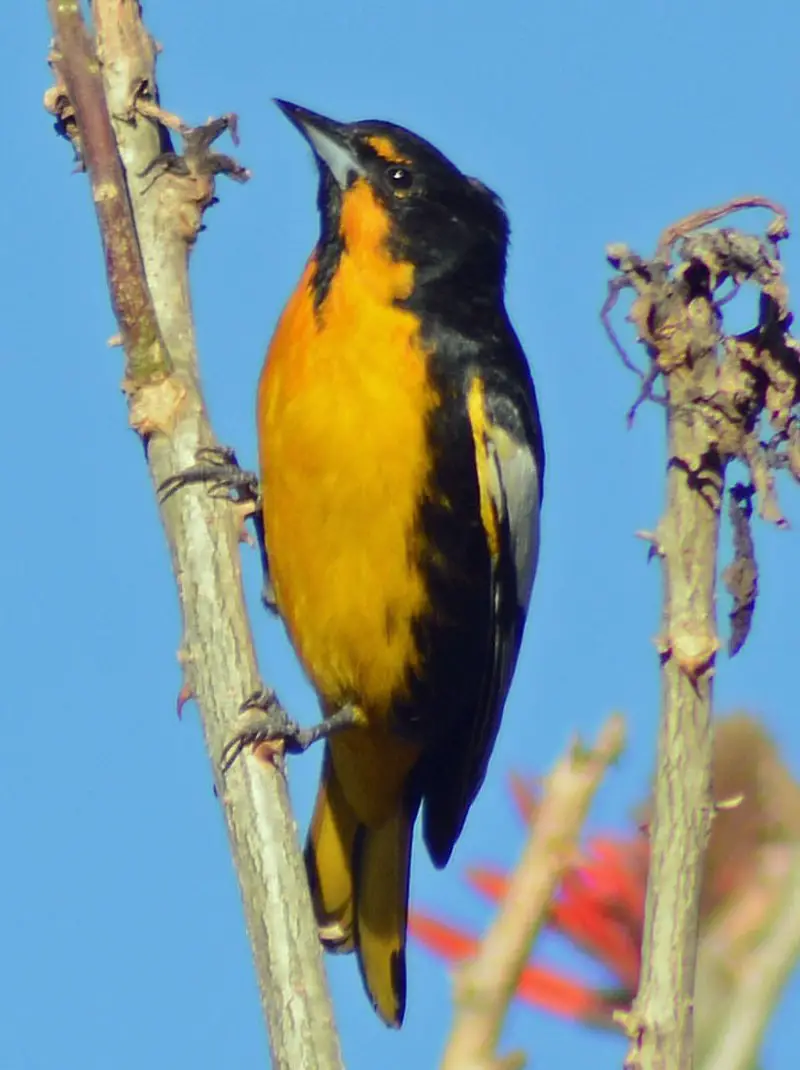
The black-backed oriole is a species of bird found in Mexico, typically residing within subtropical or tropical moist lowland forests and montane forests.
It has also been known to take up residence in cities as well. One unique trait the black-backed oriole possesses is its tolerance for monarch butterflies; while most birds cannot stomach their poison, this particular species can consume them with ease.
This makes it one of only a few species that are capable of such an adaptation. Its feathers range from bright yellow on the chest to deep browns at the back – making it easy to identify amongst other Mexican fauna.
Scientific classification:
| Kingdom | Animalia |
| Phylum | Chordata |
| Class | Aves |
| Order | Passeriformes |
| Family | Icteridae |
| Genus | Icterus |
| Species | I. abeillei |
22. Song Sparrow
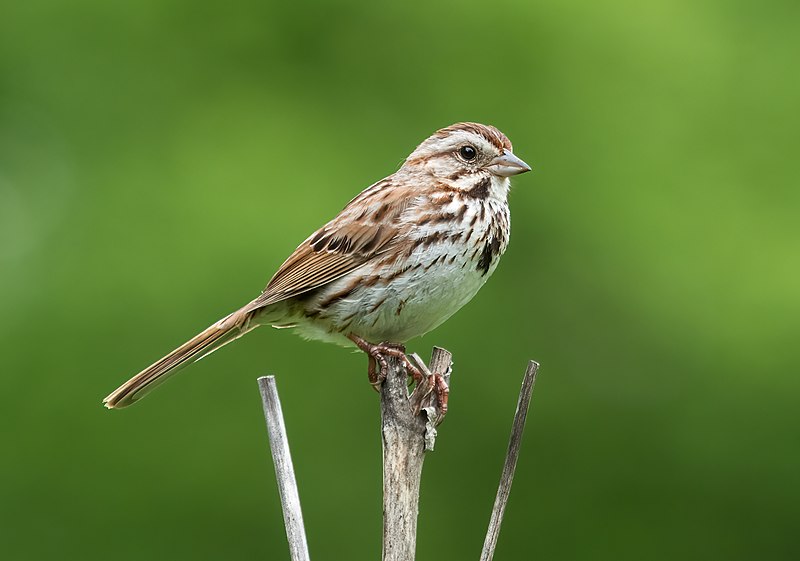
The Song Sparrow (Melospiza melodia) is a small, yet abundant bird found in North America.
They have brown upperparts with dark streaks and are white underneath, complete with a distinct dark brown spot on the breast.
Their cap is also brown and long roughed feathers can be seen sprouting from their neck area.
This sparrow species is highly variable and adaptable to many different environments including dry brush land, wetlands or open fields.
It has been noted that adult song sparrows will sing even during winter months when other birds remain quiet.
These energetic little animals make for great backyard companions as they flit about singing their lovely melodies.
Scientific classification:
| Kingdom | Animalia |
| Phylum | Chordata |
| Class | Aves |
| Order | Passeriformes |
| Family | Passerellidae |
| Genus | Melospiza |
| Species | M. melodia |
Also Featured In: Common Birds in Canada, Birds that Live in San Francisco Bay Area
23. Berylline Hummingbird
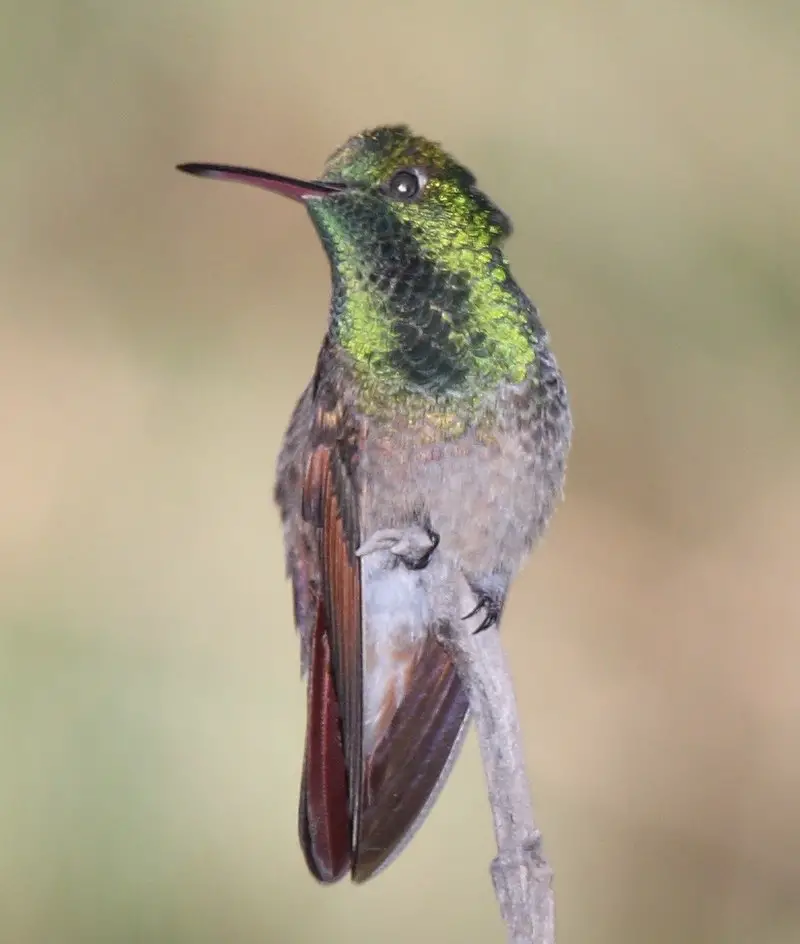
The Berylline Hummingbird is a vibrant species of hummingbird found in Central America and the United States.
It has emerald green upperparts, rufous sides and underparts, white tips to its tail feathers, as well as an iridescent purple throat patch.
These birds are highly territorial and will defend their territories against intruders with impressive aerial displays.
They feed on nectar from flowers such as bromeliads, columbines or agaves while searching for insects which they catch mid-air by hovering near foliage or flying low over meadows.
The Berylline Hummingbird is considered a Least Concern species due to its wide distribution range but it faces threats from habitat loss caused by urbanization and farming practices that reduce suitable nesting sites available for this bird.
Scientific classification:
| Kingdom | Animalia |
| Phylum | Chordata |
| Class | Aves |
| Order | Apodiformes |
| Family | Trochilidae |
| Genus | Saucerottia |
| Species | S. beryllina |
Also Featured In: Most Beautiful Birds in Guatemala,
24. Rufous-Capped Warbler
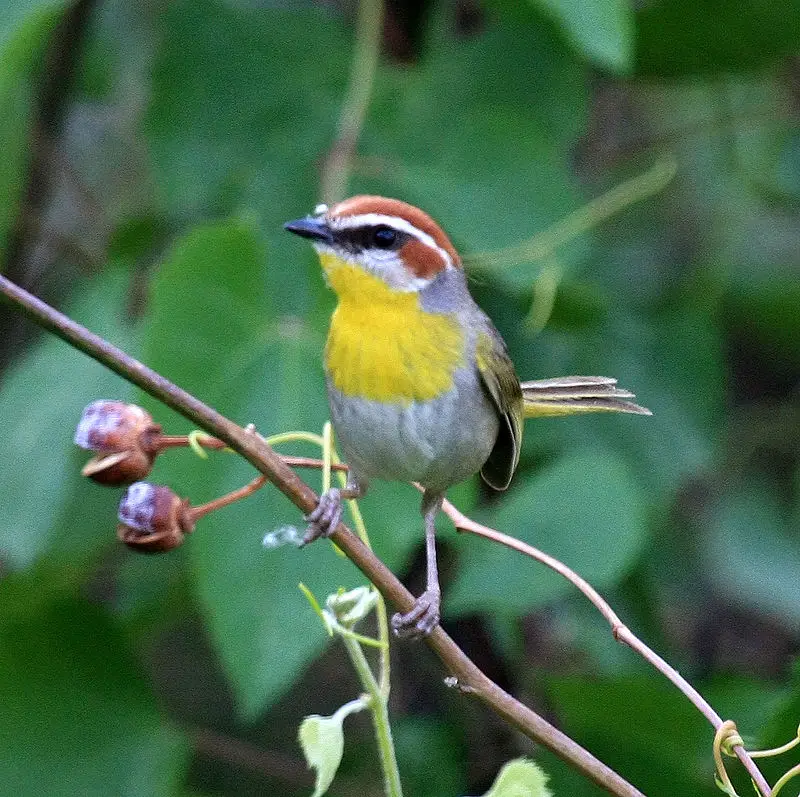
The Rufous-capped Warbler is a small New World warbler found mainly in Mexico and Guatemala.
It has distinctive chestnut-brown cap of feathers atop its head, along with olive green upperparts and yellowish underparts.
Subspecies living further south are sometimes considered as the Chestnut-Capped Warbler instead.
They usually reach 12.7 cm (5in) in length, making them one of the smaller species within their family.
As insectivores they feed on insects such as caterpillars but will also consume fruits when available and breed from March to June depending on location; nesting either close to or above ground using mosses, lichens, grasses, spider webs etc for construction material.
Scientific classification:
| Kingdom | Animalia |
| Phylum | Chordata |
| Class | Aves |
| Order | Passeriformes |
| Family | Parulidae |
| Genus | Basileuterus |
| Species | B. rufifrons |
Also Featured In: Colorful Birds of Nicaragua,
25. Mexican Chickadee

The Mexican chickadee (Poecile sclateri) is a small passerine bird in the tit family Paridae which can be found throughout Mexico and parts of Northern Central America.
It has distinctive black and white plumage, with grey wings, tail feathers and nape, as well as a prominent dark grey cap on its head. Its call consists of two notes that sound like “chick-a-dee”.
This species feeds mainly on insects but also takes seed from trees or shrubs when available.
They are often seen foraging in pairs or small groups along tree branches close to the ground where they find their preferred food items.
The Mexican chickadee plays an important role in controlling insect populations while providing much needed entertainment with its cheerful song.
Scientific classification:
| Kingdom | Animalia |
| Phylum | Chordata |
| Class | Aves |
| Order | Passeriformes |
| Family | Paridae |
| Genus | Poecile |
| Species | P. sclateri |
Also Featured In: Chickadees Birds,
26. American Bushtit
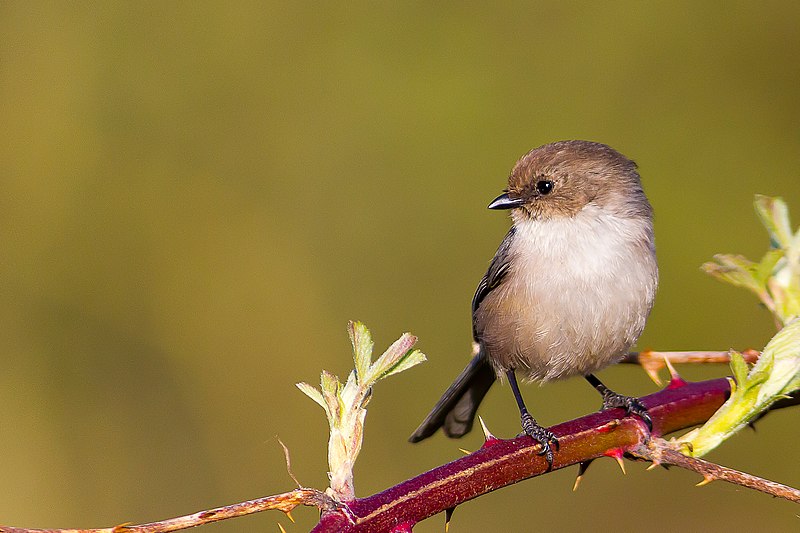
The American bushtit is a small, social bird found in the New World. It’s the only species of its genus and family, Psaltriparus minimus.
First described by John Kirk Townsend in 1837, it inhabits forests and coasts from Alaska to Mexico.
With their tiny size (4-5 inches) they are easily identified by their gray or brown backs with white underparts.
Bushtits have long wings allowing them to travel quickly between trees; they form flocks that move together through branches looking for food such as insects, spiders eggs and fruit while emitting soft chirps or squeaks.
They build beautiful large pendulous nests made of mosses which hang from tree branches high above ground level where they sleep at night.
These charming birds make delightful company during outdoor activities like hiking or camping trips.
Scientific classification:
| Kingdom | Animalia |
| Phylum | Chordata |
| Class | Aves |
| Order | Passeriformes |
| Family | Aegithalidae |
| Genus | Psaltriparus Bonaparte, 1850 |
| Species | P. minimus |
Also Featured In: Birds That Live in Colorado, Birds Live Near San Diego
27. Buff-Breasted Flycatcher
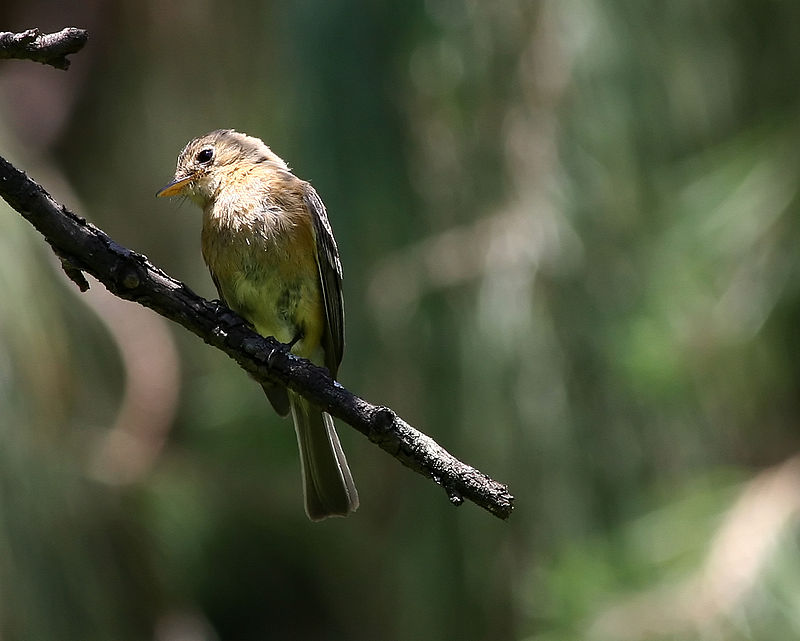
The Buff-breasted Flycatcher is a small insectivorous bird, measuring between 11.5 and 13 cm in size. It has an olive grey upper body with darker coloration on the wings and tail, as well as white eye rings, wing bars, a short bill and tail.
Its most distinguishing feature however is its chest which is washed with a strong yellowish buff colouring that really sets it apart from other species of Empidonax flycatchers.
This little bird can usually be found perched atop low branches or shrubs searching for prey such as flying insects like beetles or moths to feed upon during warmer months when food is plentiful.
Scientific classification:
| Kingdom | Animalia |
| Phylum | Chordata |
| Class | Aves |
| Order | Passeriformes |
| Family | Tyrannidae |
| Genus | Empidonax |
| Species | E. fulvifrons |
Also Featured In: Flycatchers Species,
28. Cassin’s Kingbird
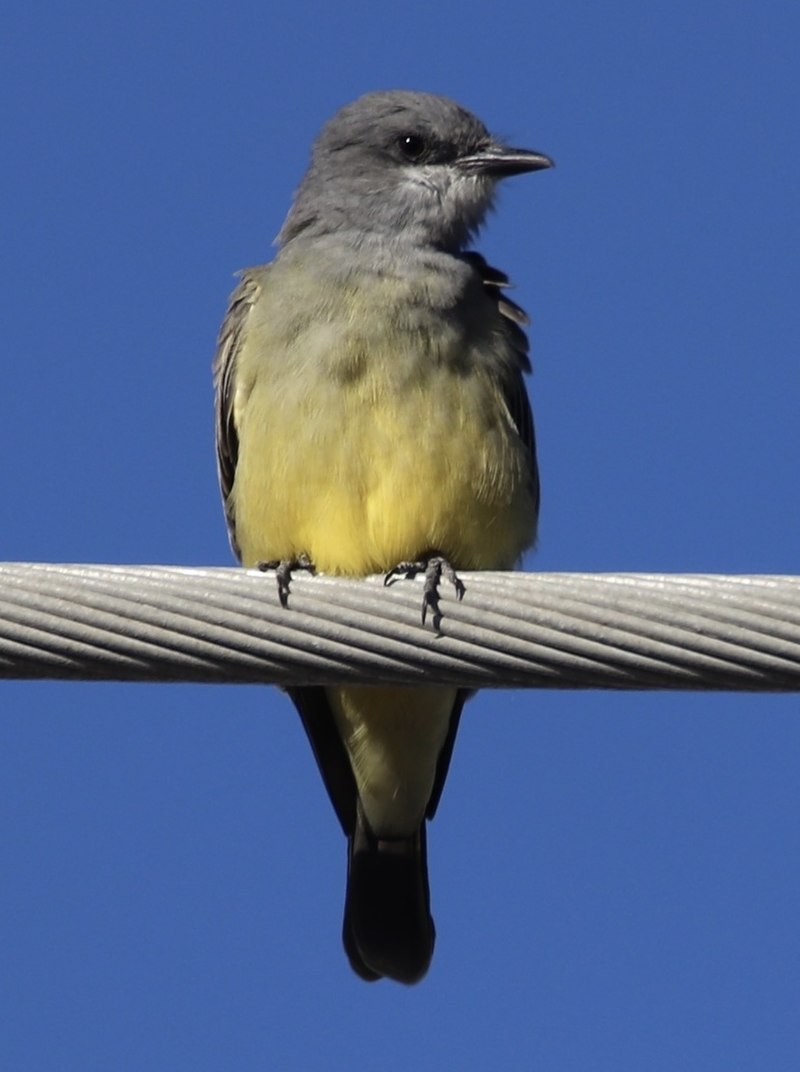
Cassin’s kingbird is a large tyrant flycatcher native to western North America. It was named in honor of the American ornithologist John Cassin and first described by English naturalist William John Swainson back in 1826, with its type locality being Temascaltepec, Mexico.
These birds are generally dark gray or brown on top with lighter underparts that have yellowish tints around the throat and belly region.
They also sport long tails which they often spread wide while perched atop branches or wires looking out for prey like insects as well as small reptiles or amphibians.
Their calls can be quite loud but usually consist of two syllables: “whee-er” or sometimes “whit-chew”.
In addition to their diet, Cassin’s Kingbirds defend territories against other species including hawks and crows during breeding season when they raise their young before migrating southward again come wintertime.
Scientific classification:
| Kingdom | Animalia |
| Phylum | Chordata |
| Class | Aves |
| Order | Passeriformes |
| Family | Tyrannidae |
| Genus | Tyrannus |
| Species | T. vociferans |
Also Featured In: Orange County Birds You Need to See, Most Common Birds in Michoacán
29. Greater Pewee
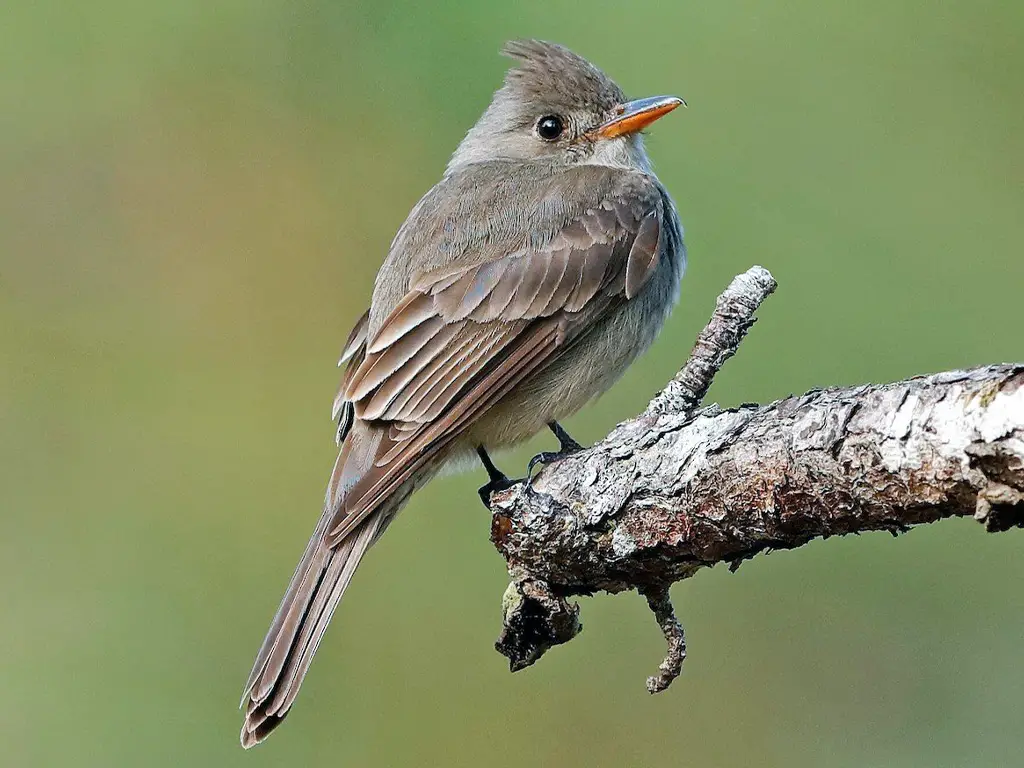
The Greater Pewee is a species of passerine bird that belongs to the tyrant flycatcher group. It has a larger range than other Mexican species and was formerly known as Coues’ Flycatcher.
This Grey-brown bird stands out due to its size, being slightly longer than an olive-sided flycatcher, making it the largest breeding Contopus flycatcher in the United States.
The male typically boasts a grayish crown with white stripes on either side along his forehead and cheeks, while their wings are mostly brownish with some lighter patches nears its body feathers.
In addition, they have two faint whitestrips running down each flank which helps them stand out from similarly colored birds during flight or when perched in trees or shrubs.
Scientific classification:
| Kingdom | Animalia |
| Phylum | Chordata |
| Class | Aves |
| Order | Passeriformes |
| Family | Tyrannidae |
| Genus | Contopus |
| Species | C. pertinax |
30. Blue-Throated Mountaingem
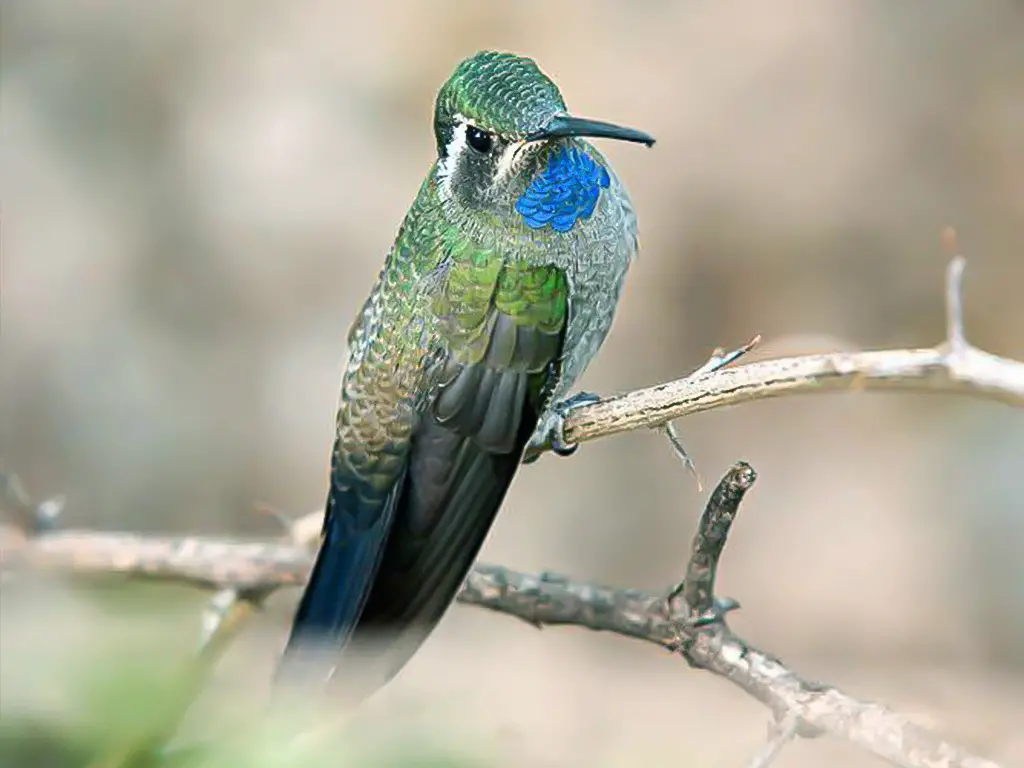
The Blue-throated Mountaingem is a species of hummingbird found in Mexico and the United States. It’s distinctively known for its blue throat, which stands out against its green body feathers.
The bird was once placed into several different genera before being finally settled in the early 20th century with it’s own dedicated genus – Cyanolaem.
This small bird has an impressive wingspan of 6 inches and weighs less than 1 ounce.
Its stunningly colored plumage makes this one of the most beautiful birds to be found across North America, making them popular amongst avid bird watchers who seek out their unique beauty.
Scientific classification:
| Kingdom | Animalia |
| Phylum | Chordata |
| Class | Aves |
| Order | Apodiformes |
| Family | Trochilidae |
| Genus | Lampornis |
| Species | L. clemenciae |
Also Featured In: Hummingbirds Species, Birds that Live in Morelos
31. Rivoli’s Hummingbird
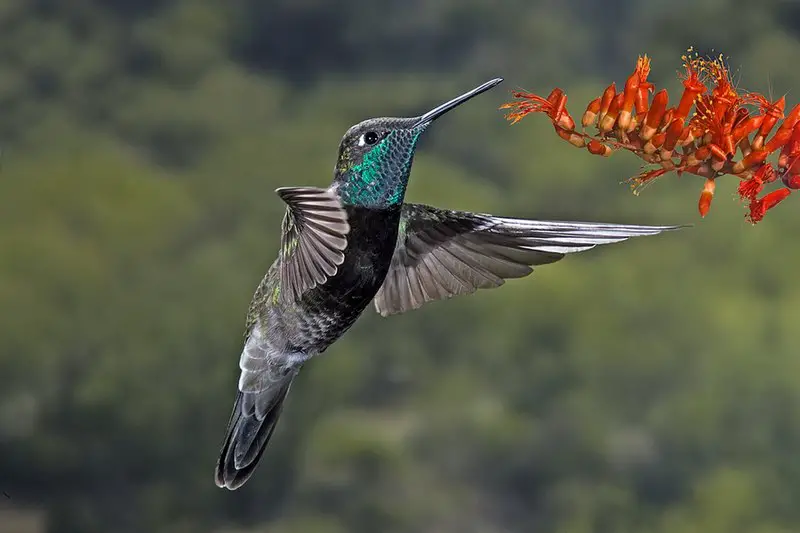
Rivoli’s hummingbird is a beautiful species of bird found in Central and North America. It belongs to the family Trochilinae, also known as “mountain gems”.
The male has an impressive iridescent purple-blue head and throat with greenish back, while the female has a more subdued coloring.
One unique feature about this species is its long tail feathers which can be up to twice as long as its body length.
This amazing bird feeds on nectar from flowers and insects such as midges, mosquitoes, spiders and moths; they even feed on sap from trees too.
Rivoli’s Hummingbirds are active during the day when their spectacular colors shine brightest making them easy to spot among other birds.
These tiny yet fascinating creatures provide us with endless hours of entertainment – it’s no wonder why they have been so adored over time.
Scientific classification:
| Kingdom | Animalia |
| Phylum | Chordata |
| Class | Aves |
| Order | Apodiformes |
| Family | Trochilidae |
| Genus | Eugenes |
| Species | E. fulgens |
Also Featured In: Green Birds in That Live in Texas, Hummingbirds Live around Florida
32. White-Eared Hummingbird
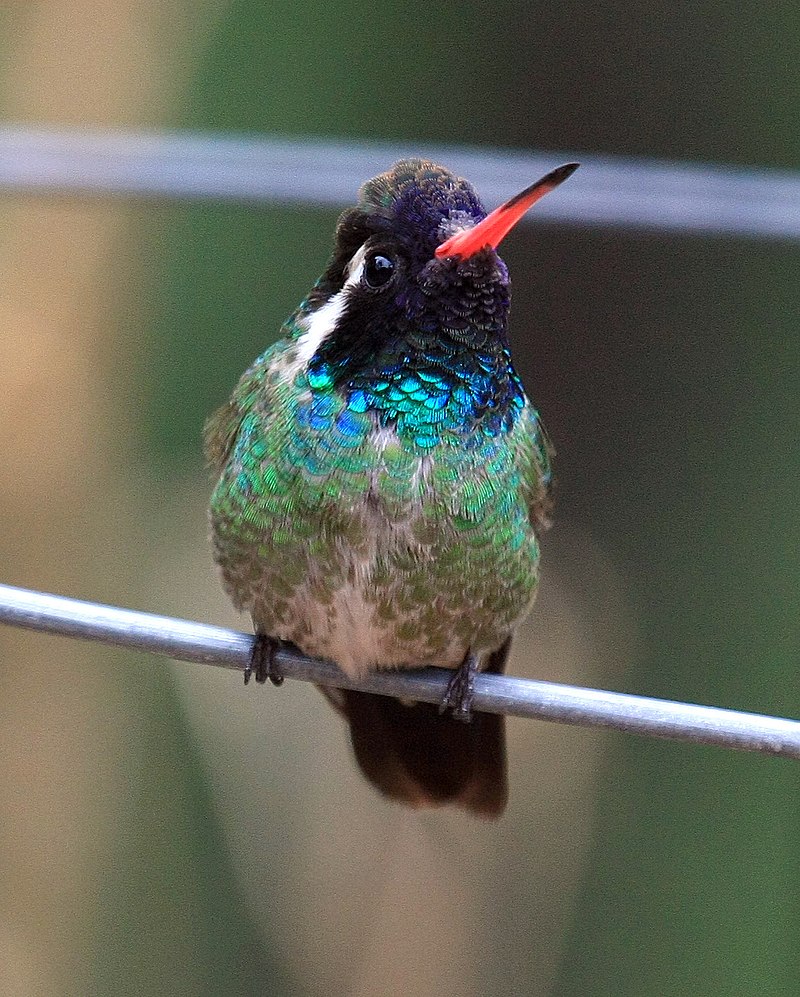
The White-eared Hummingbird is a species of bird found in the southwestern United States to Nicaragua. It belongs to the Trochilini tribe, subfamily Trochilinae and genus Basilinna.
With its white ear coverts, dark green back and rufous tail, it stands out among other hummingbirds with its unique plumage. This small but beautiful bird has an average length of 4 inches and weighs only 0.1 ounces.
Its diet consists mainly of nectar from flowers as well as insects which they feed on while hovering midair or perching atop plants or branches.
The White-eared Hummingbird is also known for their courtship displays where males perform aerial dives at high speeds that create loud noises.
These birds are amazing creatures that bring much joy when seen up close in nature.
Scientific classification:
| Kingdom | Animalia |
| Phylum | Chordata |
| Class | Aves |
| Order | Apodiformes |
| Family | Trochilidae |
| Genus | Basilinna |
| Species | B. leucotis |
Also Featured In: Puerto Vallarta Birds You Should Know,
33. Rufous-Crowned Sparrow
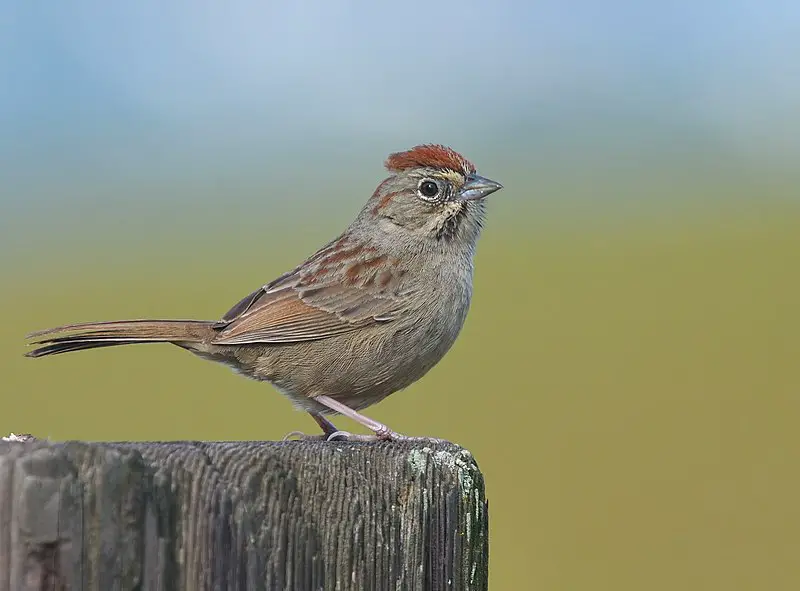
The Rufous-crowned Sparrow is a small American passerine found in the Southwestern US and much of Mexico. It has twelve subspecies, typically distinguished by their range and plumage variations.
They have greyish to olive brown upperparts with light streaking and white under parts with dark streaks or spots on their breast, belly or flanks.
The most distinguishing feature of these birds are the rusty red crowns for which they are named after.
Their diet consists mainly of seeds from grasses and weeds as well as insects during spring & summer months when raising young chicks.
These birds inhabit open woodland edges, desert scrubland, rangelands & grasslands often near water sources like rivers or creeks making it easier to find food resources needed for survival throughout its range.
Scientific classification:
| Kingdom | Animalia |
| Phylum | Chordata |
| Class | Aves |
| Order | Passeriformes |
| Family | Passerellidae |
| Genus | Aimophila |
| Species | A. ruficeps |
Also Featured In: Sparrows Species,
34. White-Throated Thrush
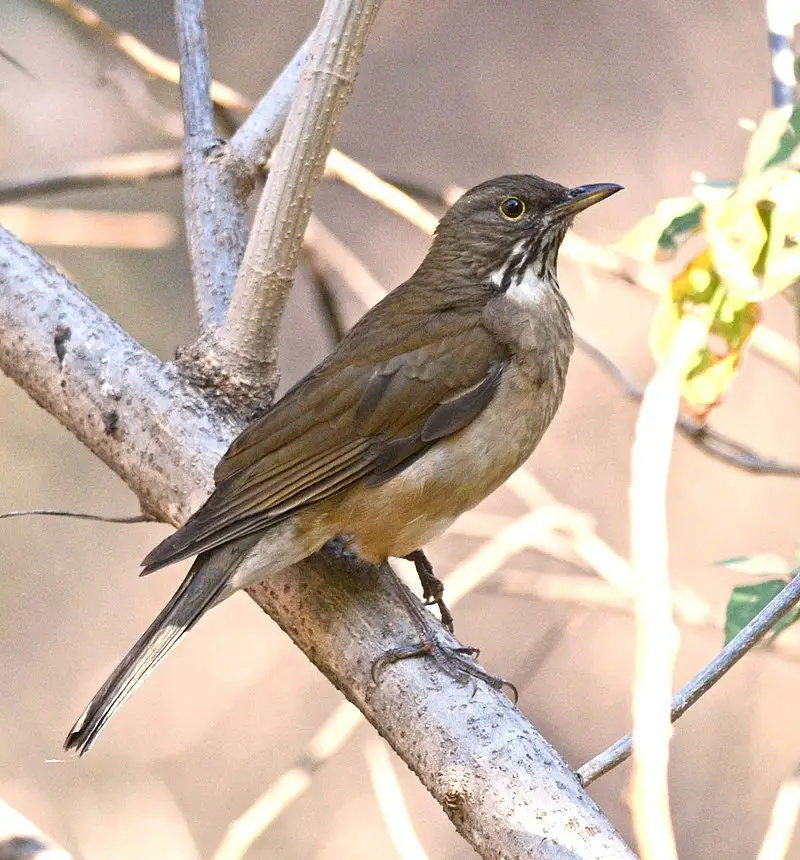
The White-throated Thrush is a species of bird belonging to the Turdidae family. It’s native to Mexico, Central America and parts of Panama.
This elegant avian has 13 different subspecies, with its most distinct being the Dagua Thrush found in East Panama.
The beautiful plumage includes an upper side that varies from greyish brown to black with white spots; while its underbelly is mostly white or greyish yellow fading into chestnut on their flanks.
Its distinctive feature however is it’s pale whitish throat which gives rise to its name -White-throated thrush.
These birds are known for making melodious calls at dawn and dusk.
Scientific classification:
| Kingdom | Animalia |
| Phylum | Chordata |
| Class | Aves |
| Order | Passeriformes |
| Family | Turdidae |
| Genus | Turdus |
| Species | T. assimilis |
Also Featured In: Thrush Species,
35. Ladder-Backed Woodpecker
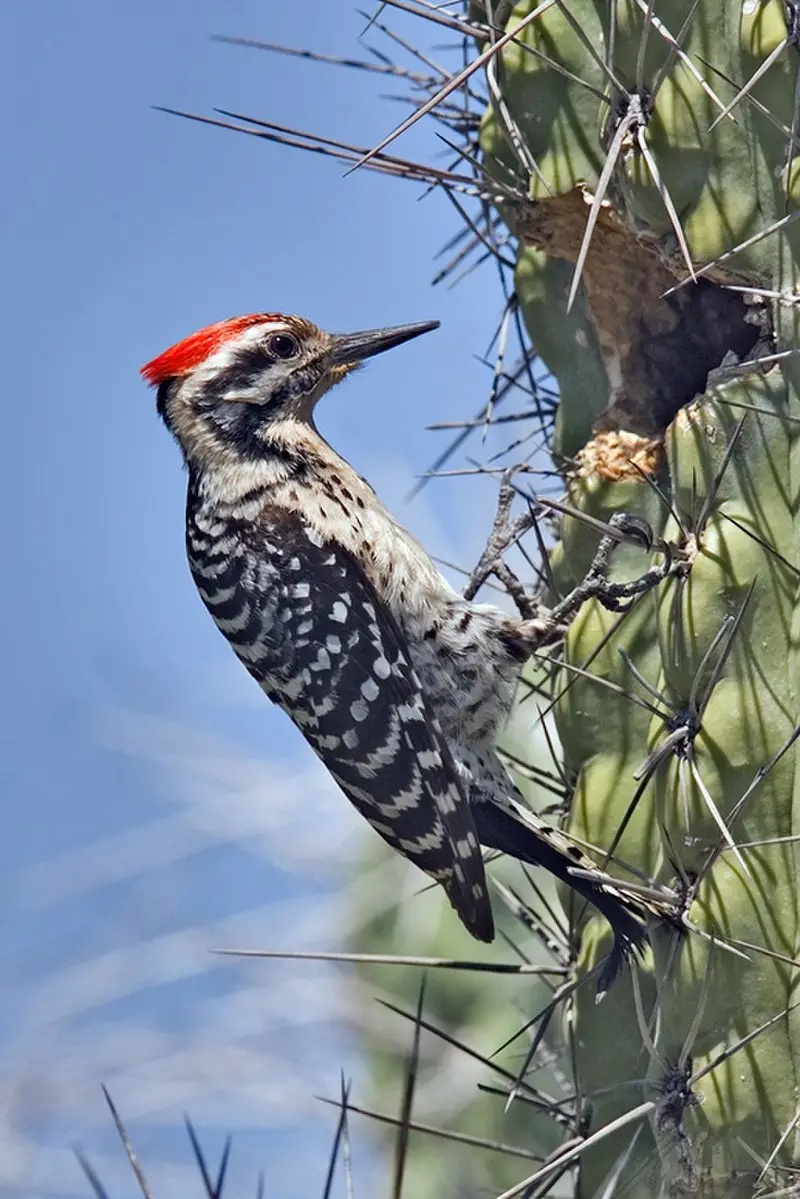
The Ladder-backed Woodpecker is a small black and white bird native to North America.
At about 16.5-19 cm in length, it has a characteristic barred pattern on its back resembling the rungs of a ladder, as well as speckled black rump and cream colored underparts on its breast and flanks.
These birds can be found inhabiting woodlands across their range, where they feed mostly on insects that they find by drilling into trees or hunting from exposed branches.
Their call consists of short chirps repeated every few seconds with an occasional longer trill thrown in for good measure.
They are also known to use twigs or other objects to probe crevices while searching for food – making them quite resourceful hunters indeed.
Scientific classification:
| Kingdom | Animalia |
| Phylum | Chordata |
| Class | Aves |
| Order | Piciformes |
| Family | Picidae |
| Genus | Dryobates |
| Species | D. scalaris |
Also Featured In: Woodpeckers Species, Central Texas Birds
36. Canyon Wren
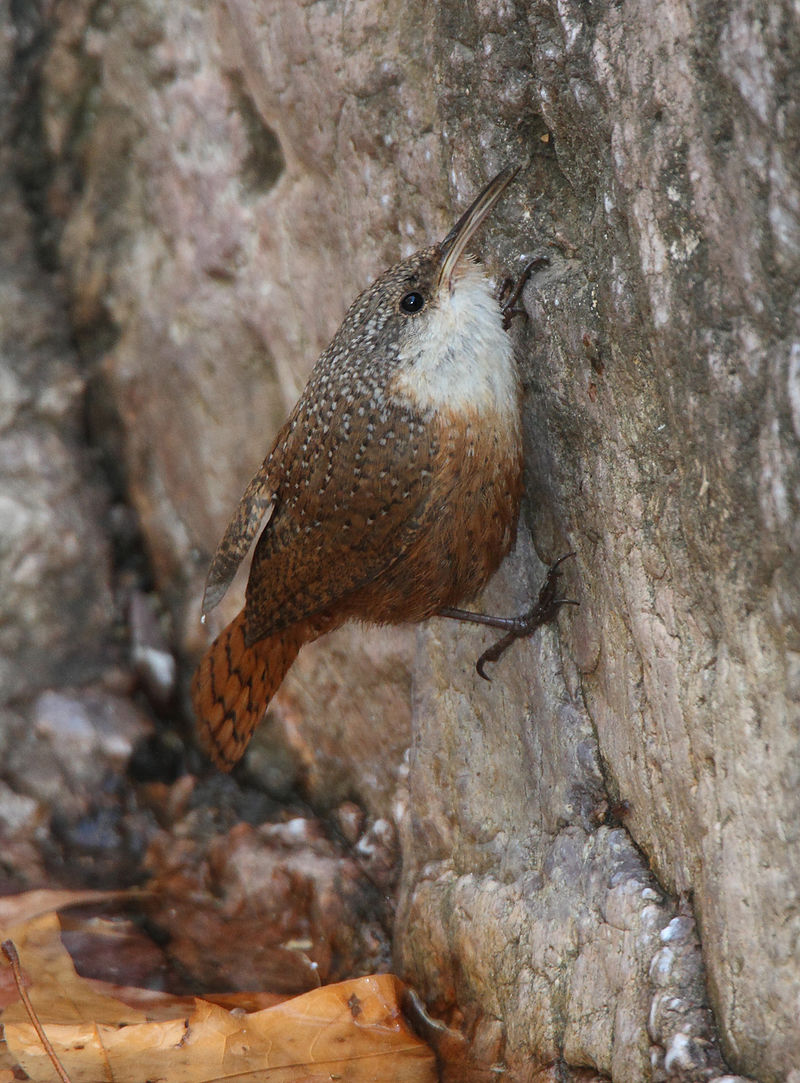
The Canyon Wren is a small songbird that belongs to the wren family, Troglodytidae. It’s native to North America and lives mainly in rocky or arid areas such as cliffs and canyons.
A distinct feature of this bird is its loud song which echoes through the canyon walls – it can be heard from far away.
The Canyon Wren has adapted well to its environment; with drab coloring helping it blend into the rocks, camouflaging itself from predators.
Its diet consists mainly of insects, spiders and snails found on cliff faces or in crevices between rocks.
As there are no other species within its taxon, they do not have any major threats aside from natural occurrences like avalanches or rock slides that could cause habitat loss for them.
Scientific classification:
| Kingdom | Animalia |
| Phylum | Chordata |
| Class | Aves |
| Order | Passeriformes |
| Family | Troglodytidae |
| Genus | Catherpes Baird, 1858 |
| Species | C. mexicanus |
Also Featured In: Wrens Species, Most Common Songs Birds that Live around You
37. Curve-Billed Thrasher
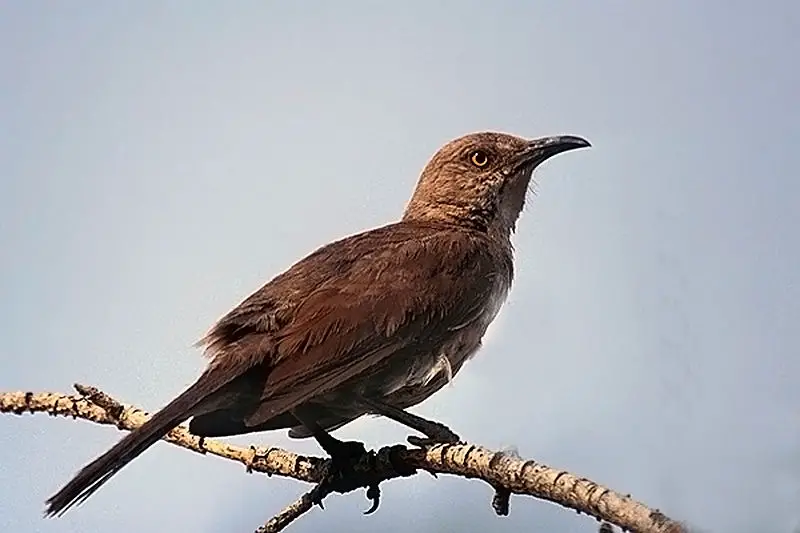
The Curve-billed Thrasher is a medium-sized bird native to Mexico and the southwestern United States. It lives mainly in desert areas, where it can be found foraging on the ground for its insect prey.
Its name comes from its curved bill, which aids in rooting out insects and other food sources.
The species has several subspecies that are geographically separated throughout much of their range; allopatric speciation likely played an important role here as well.
Despite being non-migratory, this thrasher will sometimes travel long distances when resources become scarce or during courtship displays with potential mates.
A successful predator of grasshoppers, beetles and other arthropods, the Curve-billed Thrasher plays an essential role in maintaining healthy ecosystems by controlling pest populations.
Scientific classification:
| Kingdom | Animalia |
| Phylum | Chordata |
| Class | Aves |
| Order | Passeriformes |
| Family | Mimidae |
| Genus | Toxostoma |
| Species | T. curvirostre |
Also Featured In: birds of Arizona, Birds that Live in the Deserts
38. Black-Headed Grosbeak
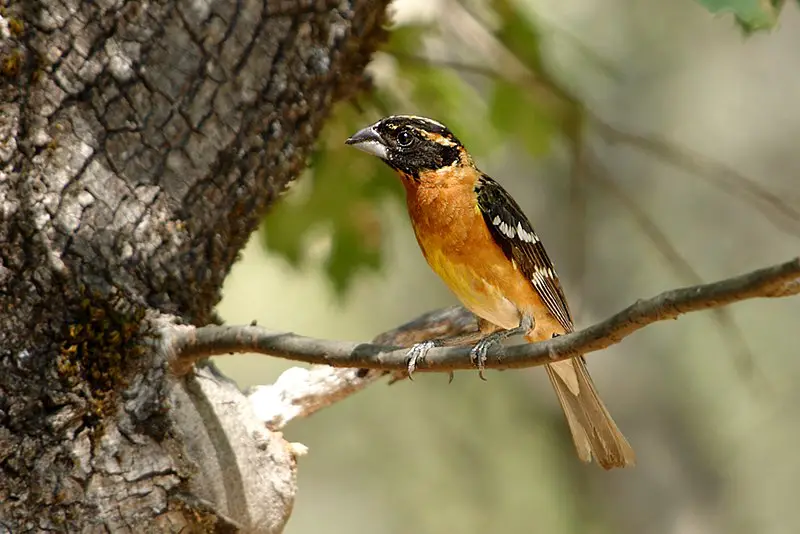
The Black-headed Grosbeak is a medium-sized bird that belongs to the Cardinalidae family. It has black head and upperparts, while its underparts are bright yellow.
This striking contrast makes it easy to distinguish from other birds. The grosbeak typically measures 19 cm in length and weighs around 47 grams.
During summer months, they migrate northward up into southwestern British Columbia for nesting grounds where they can find plenty of seeds as food sources.
They also hybridize with Rose-breasted Grosbeaks on the Great Plains in America, creating even more colorful plumage variations amongst these species.
All in all, this beautiful songbird will make an excellent addition to any backyard or garden if you’re lucky enough to spot one.
Scientific classification:
| Kingdom | Animalia |
| Phylum | Chordata |
| Class | Aves |
| Order | Passeriformes |
| Family | Cardinalidae |
| Genus | Pheucticus |
| Species | P. melanocephalus |
Also Featured In: birds of Montana, Birds You’ll Find in Vancouver Island
39. Hutton’s Vireo
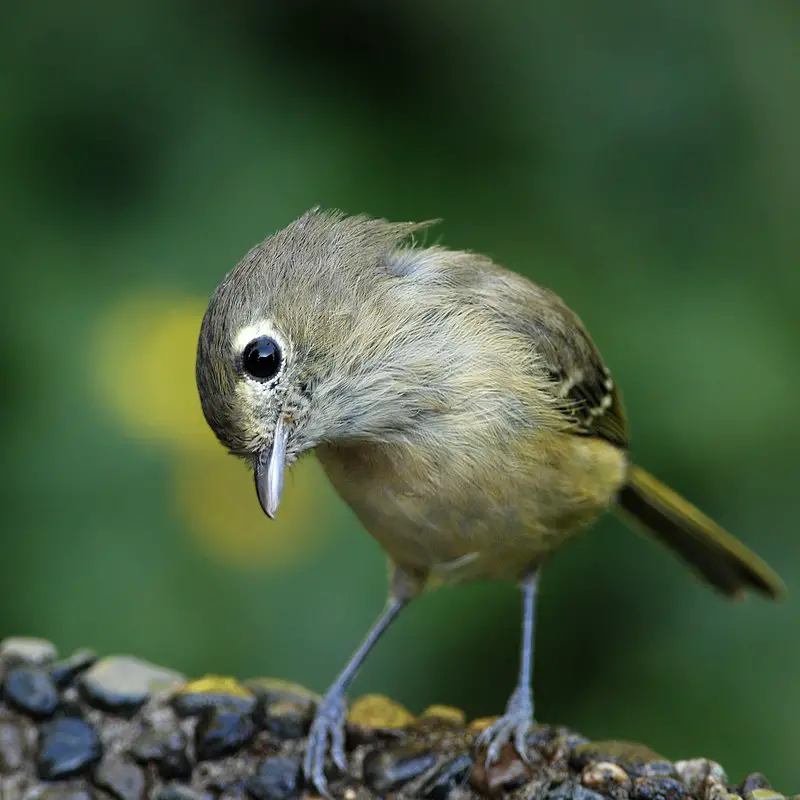
Hutton’s Vireo is a small songbird that closely resembles the Ruby-Crowned Kinglet. It has an olive gray color and can grow up to 12–13 cm in length, with a thicker bill, blue-gray legs and faint white eye ring and wing bars.
Its most distinguishable feature is its call which consists of a repeated chu-wee or chew sound.
This bird mainly feeds on insects such as flies, moths, beetles among other things but it also eats some berries too like serviceberry or elderberry fruits during wintertime.
They are usually found in open woodlands near riversides at elevations between 500 -2 000 meters above sea level where they breed from May until September making them migratory birds during winter months when food becomes scarce.
Scientific classification:
| Kingdom | Animalia |
| Phylum | Chordata |
| Class | Aves |
| Order | Passeriformes |
| Family | Vireonidae |
| Genus | Vireo |
| Species | V. huttoni |
Also Featured In: birds of Washington,
40. Bronzed Cowbird
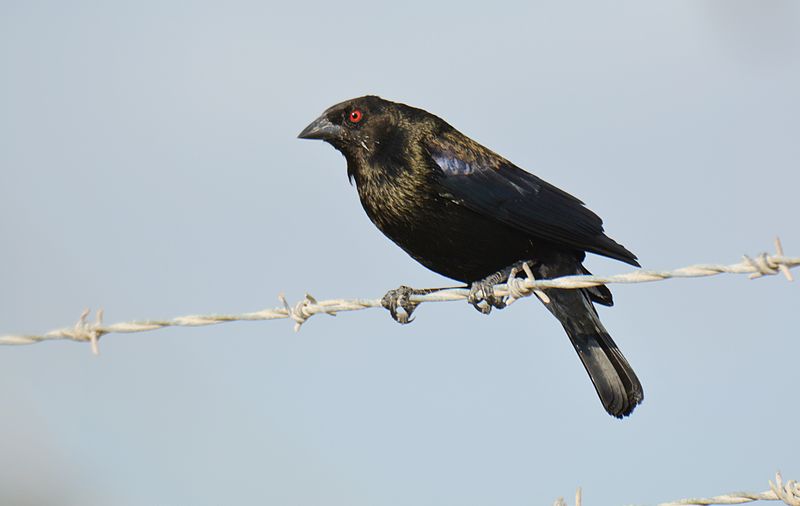
The bronzed cowbird is a small icterid species that was formerly known as the red-eyed cowbird. They are found breeding in several states of the US and many Central American countries, including Panama.
You may often spot them in farmland, brush, and feedlots, where they tend to forage. These birds prefer open habitats when not breeding and roost in dense woods.
They exhibit brood parasitism, laying their eggs in other bird species’ nests, and leaving their young ones to be reared by the host birds.
The bronzed cowbird’s diet mainly comprises seeds, grains, and insects. These birds are known for their metallic green and bronze plumage and their characteristic high-pitched whistle, which they use for communication.
They make an interesting addition to the avian diversity of their range.
Scientific classification:
| Kingdom | Animalia |
| Phylum | Chordata |
| Class | Aves |
| Order | Passeriformes |
| Family | Icteridae |
| Genus | Molothrus |
| Species | M. aeneus |
Also Featured In: Birds You’ll Find in the Rio Grande Valley, Native Birds in Lower Rio Grande Valley
41. Cinnamon-Rumped Seedeater
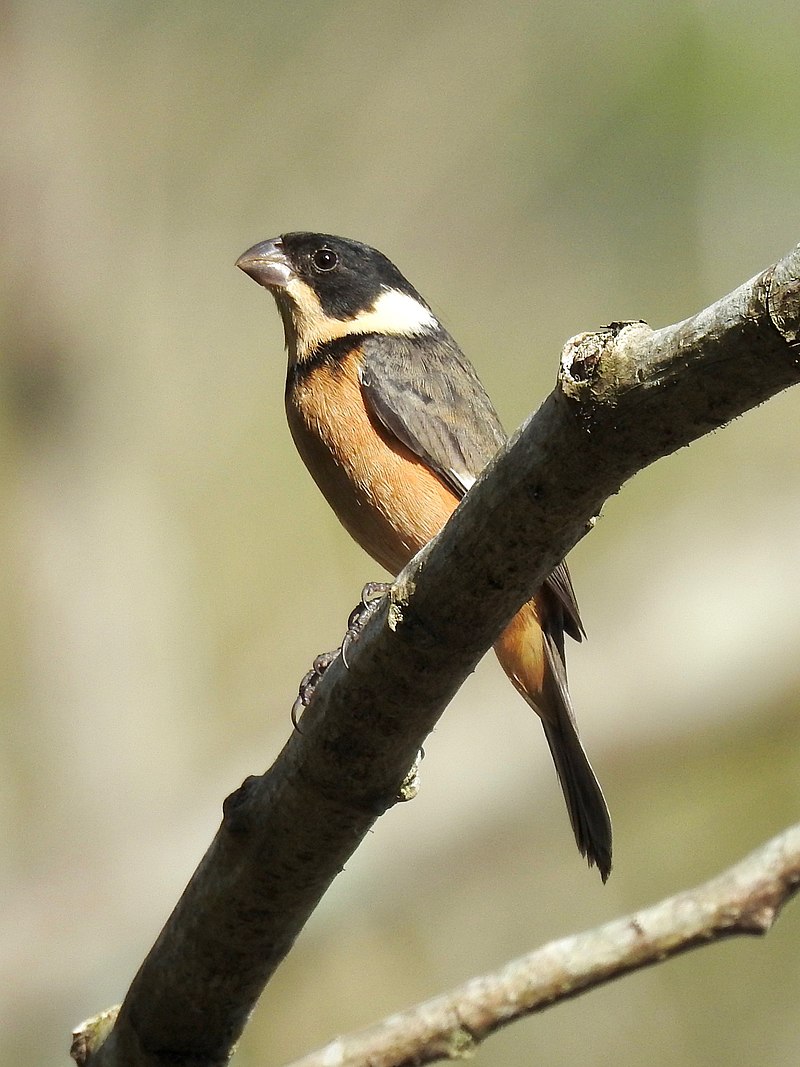
The cinnamon-rumped seedeater is a type of passerine bird that belongs to the Sporophila genus. This small bird is closely related to other Sporophila species based on genetic studies.
Formerly part of the white-collared seedeater species, the cinnamon-rumped seedeater is one of two resulting species after the split. The other species is now called Morelet’s seedeater.
The cinnamon-rumped seedeater is easily recognizable by its cinnamon-colored rump, which is one of its distinct features. These birds are primarily seed eaters but may also feed on insects.
They are typically found in grasslands and open areas with low vegetation.
Overall, the cinnamon-rumped seedeater is a fascinating bird species that is known for its unique appearance and behavior.
Scientific classification:
| Kingdom | Animalia |
| Phylum | Chordata |
| Class | Aves |
| Order | Passeriformes |
| Family | Thraupidae |
| Genus | Sporophila |
| Species | S. torqueola |
Also Featured In: Common Birds of Guerrero, Birds that Live around Santiago de Querétaro
42. Red Warbler
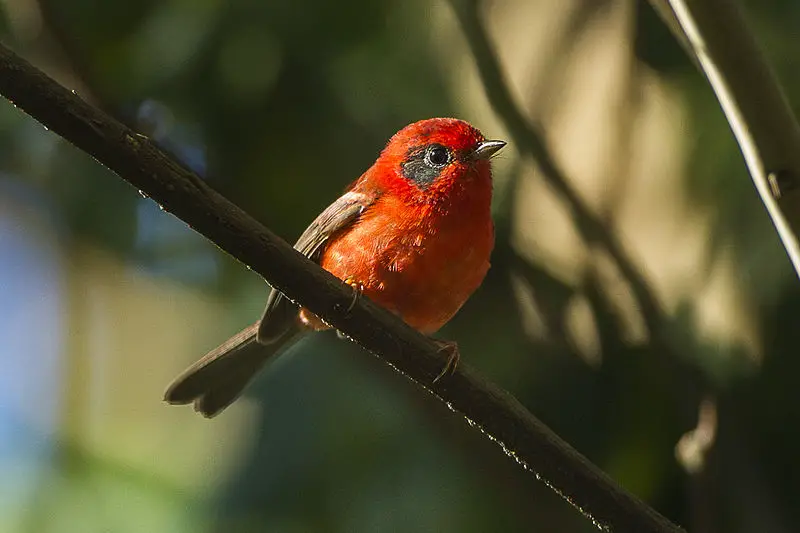
The Red Warbler, a member of the New World Warbler family, is native to the highlands of Mexico. It has three subspecies, each with a different ear patch color.
Closely related to the Pink-headed Warbler, it forms a superspecies with it. This small passerine bird is endemic to the highlands north of the Isthmus of Tehuantepec.
With its distinctive red plumage, it is a favorite among bird enthusiasts. Despite its beauty, this species faces threats from habitat loss, and its conservation status is of concern.
Scientific classification:
| Kingdom | Animalia |
| Phylum | Chordata |
| Class | Aves |
| Order | Passeriformes |
| Family | Parulidae |
| Genus | Cardellina |
| Species | C. rubra |
43. Grey Silky-Flycatcher
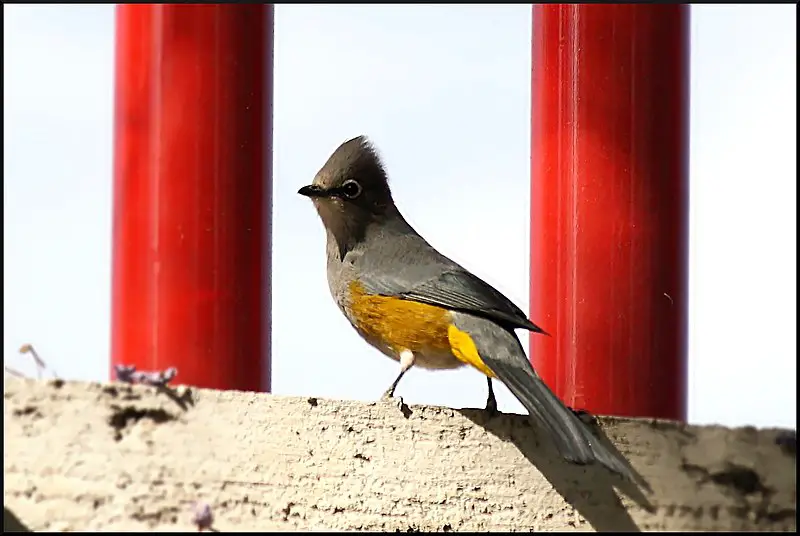
The Grey Silky-Flycatcher is a bird species that belongs to the family Ptiliogonatidae. Found primarily in Guatemala and Mexico, this bird prefers living in montane forests and adjacent scrub, ranging from mesic to xeric environments.
Vagrants of this bird species have been spotted even in the southern United States. With silky grey feathers and an elegant appearance, the Grey Silky-Flycatcher is a sight to behold. It is a flycatcher bird and its diet primarily consists of insects.
Its habitat is being threatened by deforestation, which is leading to a decline in its population. To protect this species from extinction, conservation efforts are being made to preserve its natural habitat.
The Grey Silky-Flycatcher is a majestic bird that represents the beauty of nature’s avian creations.
Scientific classification:
| Kingdom | Animalia |
| Phylum | Chordata |
| Class | Aves |
| Order | Passeriformes |
| Family | Ptiliogonatidae |
| Genus | Ptiliogonys |
| Species | P. cinereus |
44. Brown-Backed Solitaire
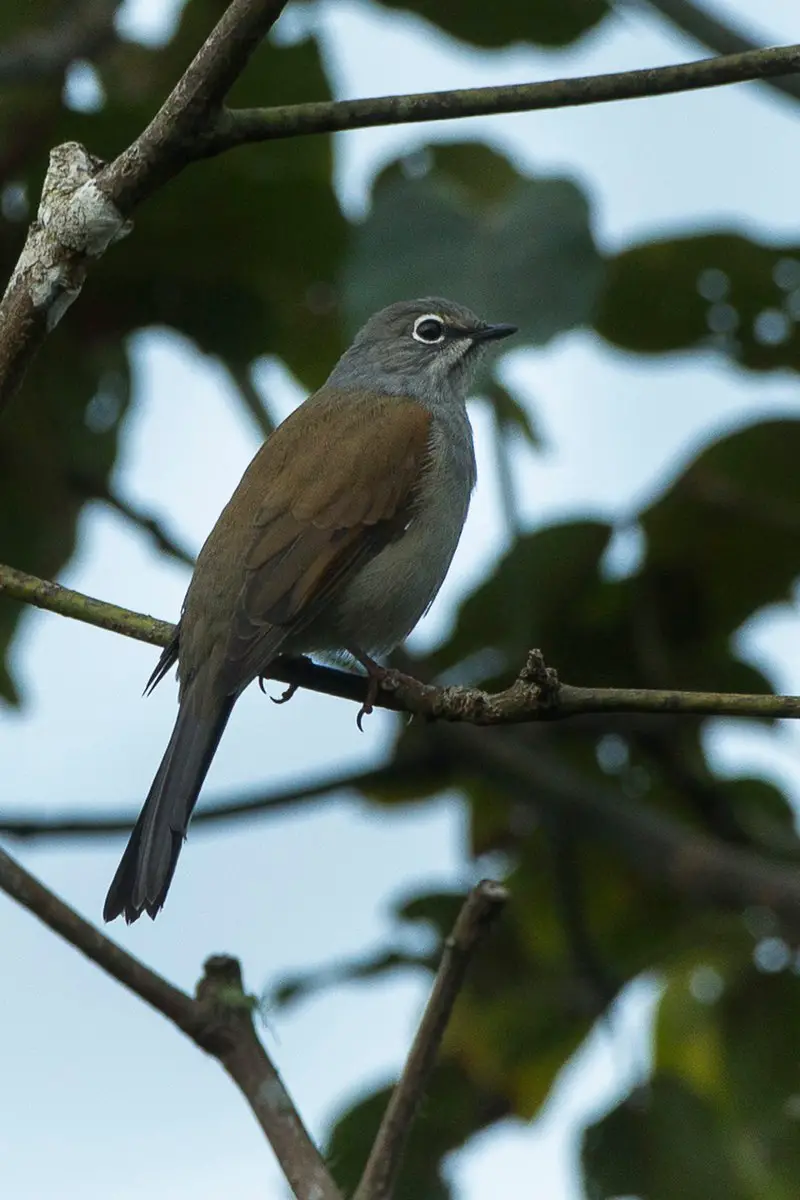
The Brown-backed solitaire, a member of the Thrush family, is a medium-sized bird typically around 8 inches long. Its wings are brown and it has a white eye ring and tail feathers.
With its mostly grayish appearance, it blends well into the mountainous forests of Mexico and northern Central America where it is common.
Despite its name, the Brown-backed solitaire is often seen perched with its brown wings and tail feathers hidden, which can make it difficult to spot.
Bird enthusiasts and researchers alike are attracted to this species for its unique song that can be heard echoing through the mountain forests.
This bird plays an important role in the ecosystem by dispersing seeds as it eats fruit and berries.
Scientific classification:
| Kingdom | Animalia |
| Phylum | Chordata |
| Class | Aves |
| Order | Passeriformes |
| Family | Turdidae |
| Genus | Myadestes |
| Species | M. occidentalis |
45. Yellow-Eyed Junco
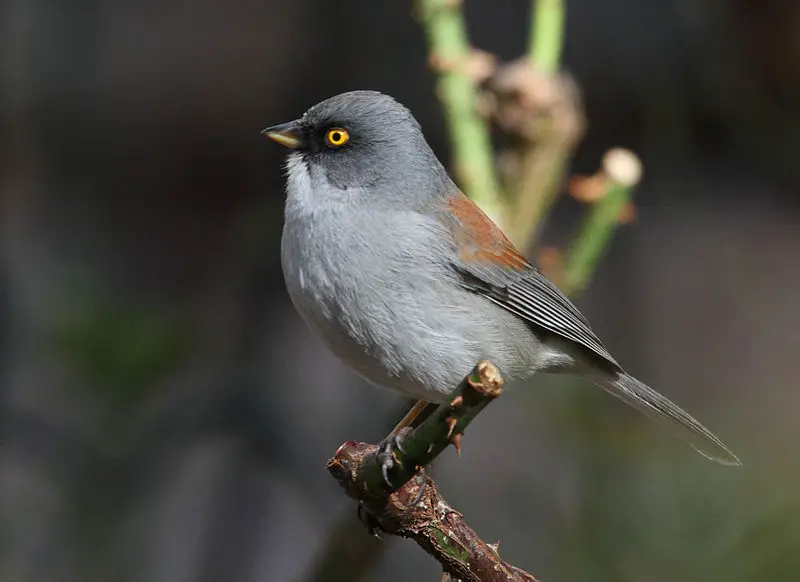
The Yellow-eyed junco bird is a small sparrow species found mainly in Mexico, with some populations in Arizona and New Mexico. While it is not migratory, it may move to lower elevations in winter.
The female yellow-eyed junco lays a clutch of three to five pale gray or bluish-white eggs. This bird’s most distinctive feature is its yellow eyes, which give it its name. As a member of the junco family, this bird has a round body and relatively short bill.
Its diet consists mainly of seeds and insects. Despite its limited range and somewhat secretive nature, the Yellow-eyed junco is appreciated by birdwatchers for its beautiful markings and unique features, like its bright yellow eyes.
Scientific classification:
| Kingdom | Animalia |
| Phylum | Chordata |
| Class | Aves |
| Order | Passeriformes |
| Family | Passerellidae |
| Genus | Junco |
| Species | J. phaeonotus |
46. Slate-Throated Whitestart
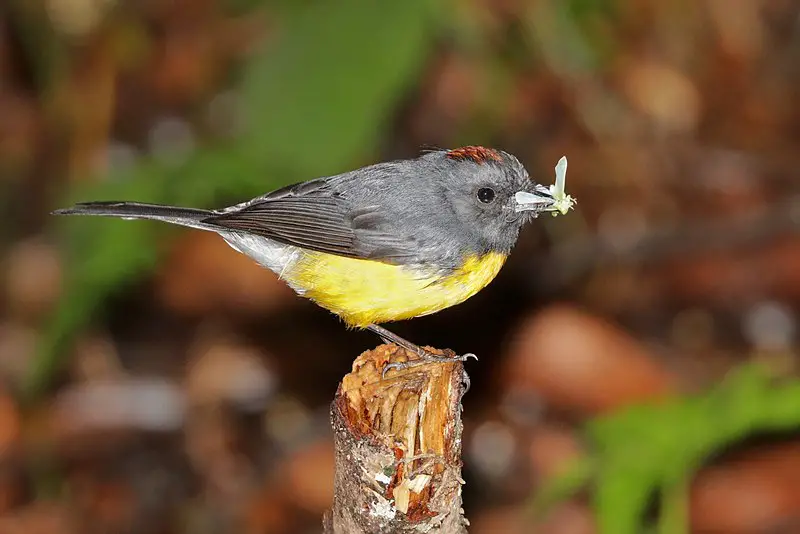
The slate-throated whitestart, also known as the slate-throated redstart, is a small, long-tailed warbler found in Central and South America.
It measures about 12 cm in length and is easily identified by its deep rufous head, dark back, bright yellow breast and belly, and white vent and tail tips.
Its bill is black, and the legs are short. This species is a member of the Parulidae family, commonly known as the New World warblers.
It is a very active bird, often seen flicking its tail and hopping from branch to branch in search of insects.
The slate-throated whitestart is a colorful and beloved bird among birdwatchers and nature enthusiasts alike.
Scientific classification:
| Kingdom | Animalia |
| Phylum | Chordata |
| Class | Aves |
| Order | Passeriformes |
| Family | Parulidae |
| Genus | Myioborus |
| Species | M. miniatus |
47. Golden-Browed Warbler
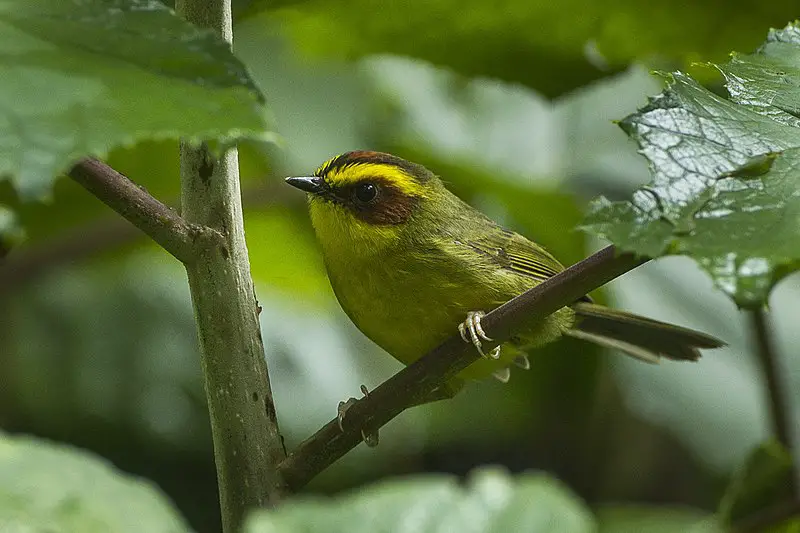
The Golden-browed Warbler is a small bird belonging to the Parulidae family commonly found in the subtropical and tropical moist montane forests of El Salvador, Guatemala, Honduras, and Mexico.
This New World warbler is distinctively colored, with a golden-brown crown and black markings on its cheeks, throat, and upper breast.
Its natural habitat is high altitude forests, where it feeds on spiders, insects, and small fruits.
The breeding season for this species occurs from March to August, and females lay two to three eggs at a time.
Golden-browed Warblers are known for their sweet, musical songs, which they use to attract mates and communicate within their social groups.
However, the species is threatened due to habitat destruction and fragmentation, and their conservation status is currently listed as Near Threatened.
Scientific classification:
| Kingdom | Animalia |
| Phylum | Chordata |
| Class | Aves |
| Order | Passeriformes |
| Family | Parulidae |
| Genus | Basileuterus |
| Species | B. belli |
48. Northern Tufted Flycatcher
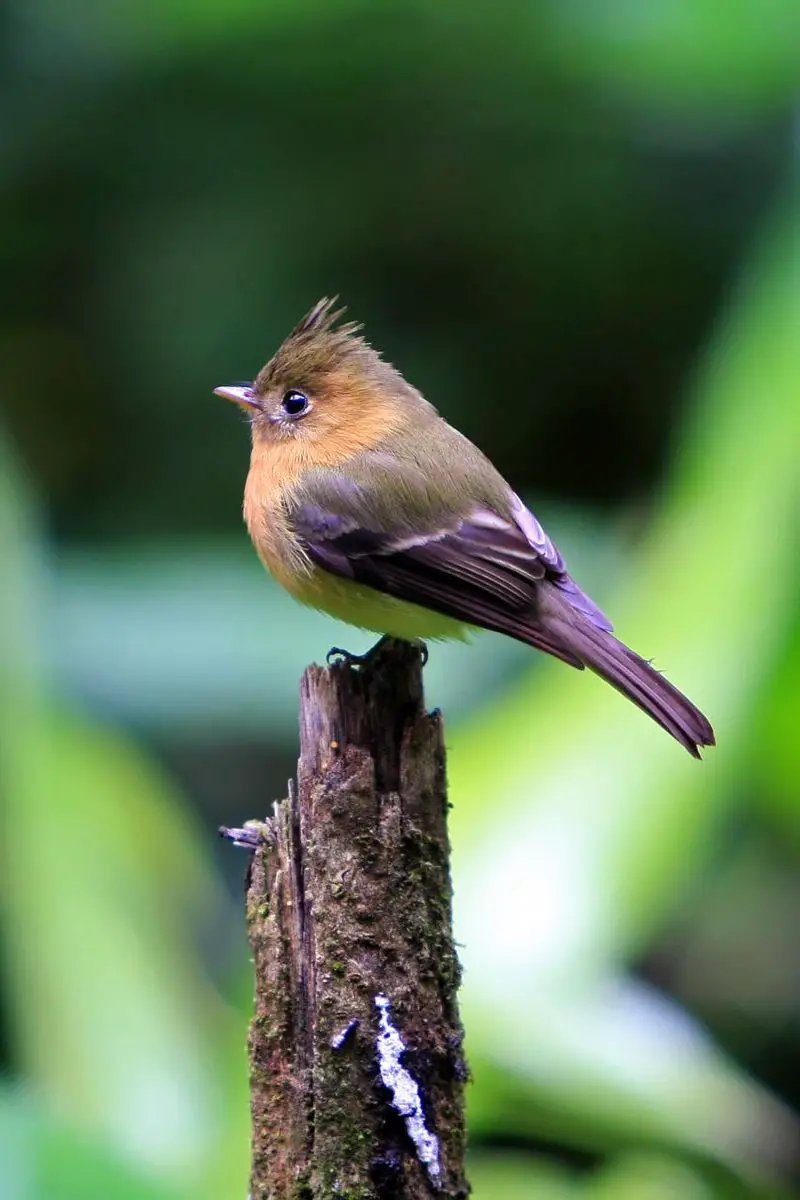
The Northern tufted flycatcher, also known as tufted flycatcher, is a small bird found in the highlands of Northwestern Mexico to Northwestern Ecuador.
It belongs to the tyrant flycatcher family and prefers to breed in mature mountain forests or tall second-growth areas.
This bird is a common inhabitant of its habitat, where it can be found flitting around in search of insects to feed on.
The olive flycatcher of Bolivia and Peru was once considered the same species as the Northern tufted flycatcher but is now recognized as a different species.
Overall, the Northern tufted flycatcher is a charming bird that is appreciated for its beauty and contribution to the ecosystem.
Scientific classification:
| Kingdom | Animalia |
| Phylum | Chordata |
| Class | Aves |
| Order | Passeriformes |
| Family | Tyrannidae |
| Genus | Mitrephanes |
| Species | M. phaeocercus |
49. Cinnamon-Bellied Flowerpiercer
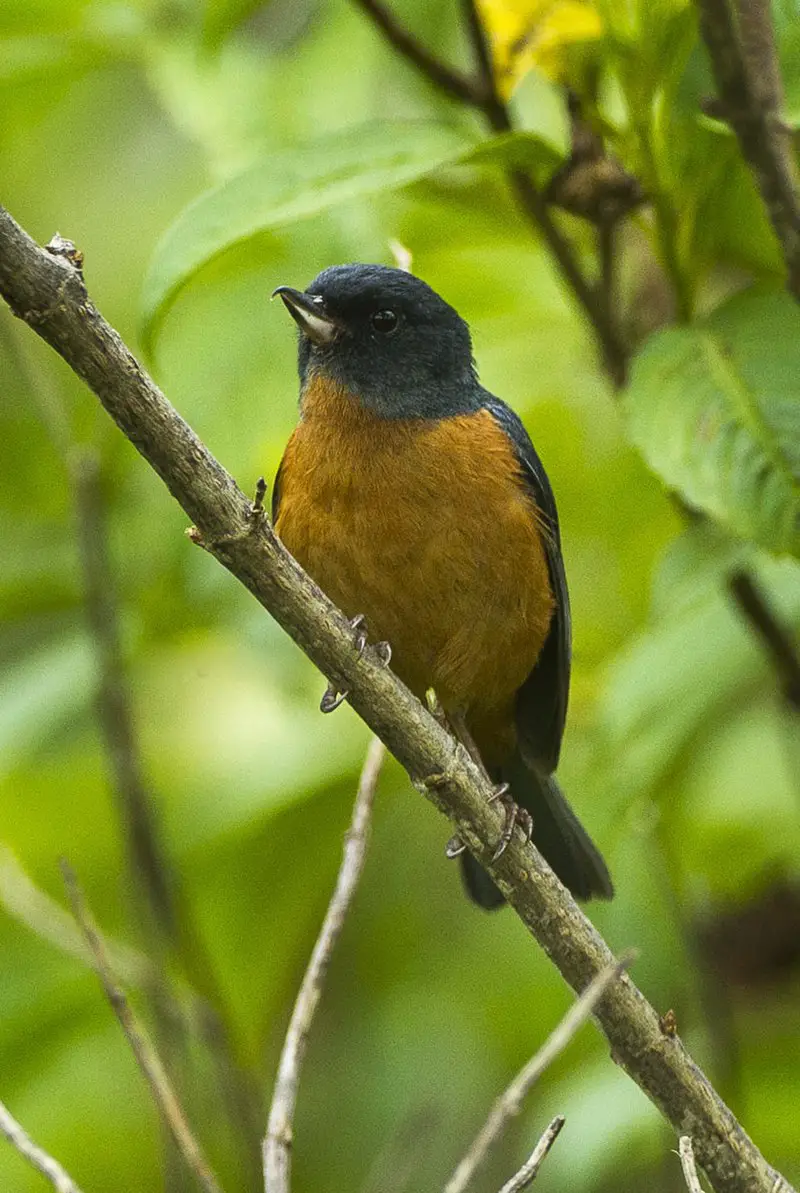
The cinnamon-bellied flowerpiercer bird belongs to the Thraupidae family and can be found in El Salvador, Guatemala, Honduras, and Mexico.
It resides in subtropical or tropical moist montane forests and heavily degraded former forests.
The bird is known to be a nectar robber, stealing the nectar without pollinating the plant.
Despite its thieving nature, it remains an intriguing species in the bird world. The bird has a distinct cinnamon belly that sets it apart from other species.
Although it is not a popular bird, the cinnamon-bellied flowerpiercer plays a crucial role in maintaining the ecosystem.
Its presence signifies a stable and healthy environment, which needs to be preserved for the sake of the planet.
Scientific classification:
| Kingdom | Animalia |
| Phylum | Chordata |
| Class | Aves |
| Order | Passeriformes |
| Family | Thraupidae |
| Genus | Diglossa |
| Species | D. baritula |
50. Aztec Rail
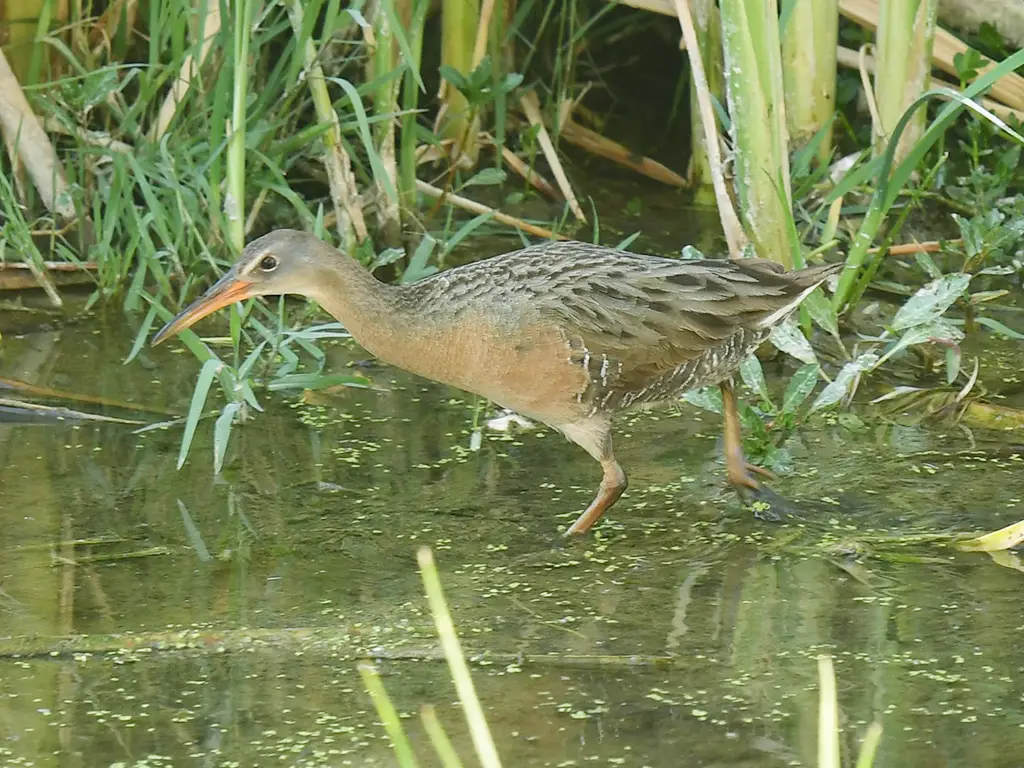
The Aztec rail bird, also known as the Mexican rail, is a rail species that is found only in Mexico.
This bird is a member of the Rallidae family and is categorized as a Near Threatened species due to the threat of habitat destruction.
In the past, it was combined with several other rail species like the king rail and the clapper rail, but is now recognized as a distinct species.
As with other rails, the Aztec rail is a ground-dwelling bird that is secretive and seldom seen despite being found in a relatively small area.
Efforts are being made to conserve its habitat, which consists of wetlands and marshes, in order to protect this unique and beautiful bird species.
Scientific classification:
| Kingdom | Animalia |
| Phylum | Chordata |
| Class | Aves |
| Order | Gruiformes |
| Family | Rallidae |
| Genus | Rallus |
| Species | R. tenuirostris |